
Article Summary: California Landmarks
California Landmarks. More Than Just Parks has 25 incredible must-see sites for you to visit.
There’s so much more to this exciting place than the Los Angeles Dodgers. In this article, we’ll familiarize you with the incredible landmarks located in the Golden State.
We’ve got incredible places, iconic memorials, fascinating museums, epic monuments and so much more.
We’re going to give you our list of the Top 25 Landmarks In California.
So, What Is A Landmark?
Well, it’s a place of “a special character or special historical or aesthetic interest or value as part of the development, heritage, or cultural characteristics of a city, state, or nation.”
Why visit these places? Because landmarks connect us to the past. Through visiting these wonderful places where history occurred we find our roots. It allows us to feel like we are a part of something much bigger than ourselves.
And, speaking of history, did I mention that I taught the subject? I spent a lifetime teaching about the history behind many of these amazing sites. Then I got to see them firsthand. And now I’m sharing the fascinating stories of these places with you. It doesn’t get any better than that!
So, without further ado, let’s dive in.
Table Of Contents
Table of Contents: California Landmarks
- California Landmarks
- Some Fascinating Facts About California
- Top 25 California Landmarks
- Top 20 California Landmarks
- Top 15 California Landmarks
- Top 10 California Landmarks
- Watch Our Redwood Film
- Top 5 California Landmarks
- Check Out Our Joshua Tree Film
- Check Out Our Death Valley Film
- Map Of California Landmarks
- We Hope You’ll Join Our Journey
- Helpful Related Articles
California Landmarks
Some Fascinating Facts About California
- California is the most populous state in the United States, with a population of over 39 million people.
- The state capital of California is Sacramento.
- California is located on the west coast of the United States and is bordered by Oregon to the north, Nevada to the east, and Arizona to the southeast.
- California is the third-largest state in the United States in terms of land area.
- The highest point in California is Mount Whitney, which stands at 14,505 feet (4,421 meters) above sea level.
- The state of California is known for its diverse geography, including mountains, beaches, deserts, and forests.
- The state is home to a number of major cities, including Los Angeles, San Francisco, San Diego, and Sacramento.
- California is known for its entertainment industry, particularly Hollywood, which is located in Los Angeles.
- California is the largest agricultural state in the country and produces a wide variety of crops, including grapes, almonds, avocados, and strawberries.
- California is also known for its wine industry, particularly in the Napa and Sonoma valleys.

We’re Excited To Share Our List Of The Top 25 California Landmarks With YOU
Opportunity, adventure, and pleasant weather are some of the many appeals of the Golden State. You can search high (Mount Whitney is the highest point in the 48 contiguous states) and low (Death Valley has North America’s lowest elevation) and truly find something for everyone in California.
You can also find some amazing landmarks in California. More Than Just Parks is excited to share our list of the Top 25 California Landmarks with you.
And we’re kicking off out list at #25 with the Hollywood Walk of Fame.
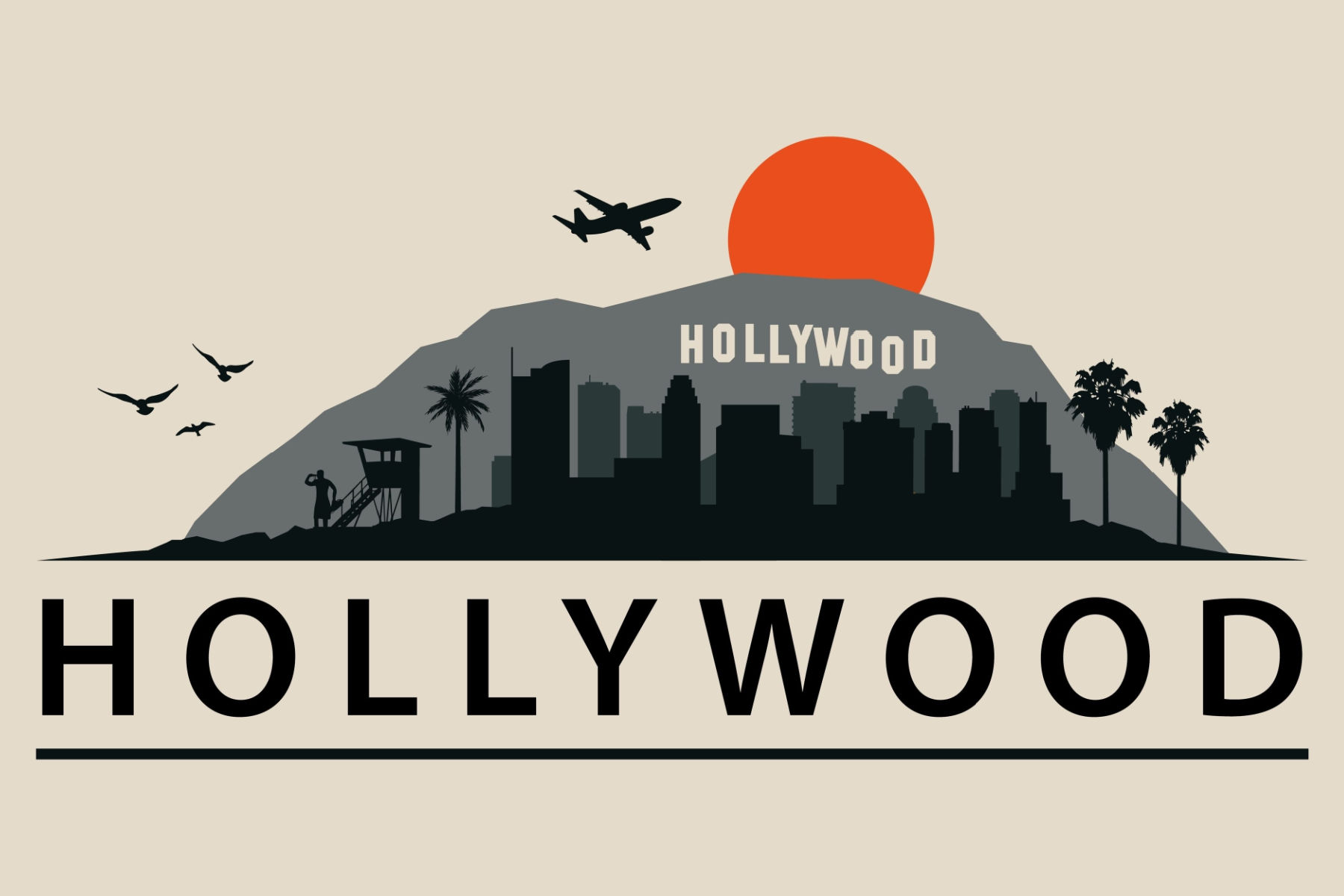
Top 25 California Landmarks
25. Hollywood Walk of Fame
The Hollywood Walk of Fame is a famous sidewalk in Hollywood, California, that features over 2,700 stars embedded with the names of famous celebrities from the entertainment industry, including actors, directors, musicians, and other notable figures.
The idea for the Walk of Fame was conceived by E.M. Stuart, a volunteer president of the Hollywood Chamber of Commerce in the late 1950s.
The goal was to create a permanent tribute to the entertainment industry and to attract tourists to the area. The concept was inspired by the idea of the sidewalk stars that existed in various cities around the world.
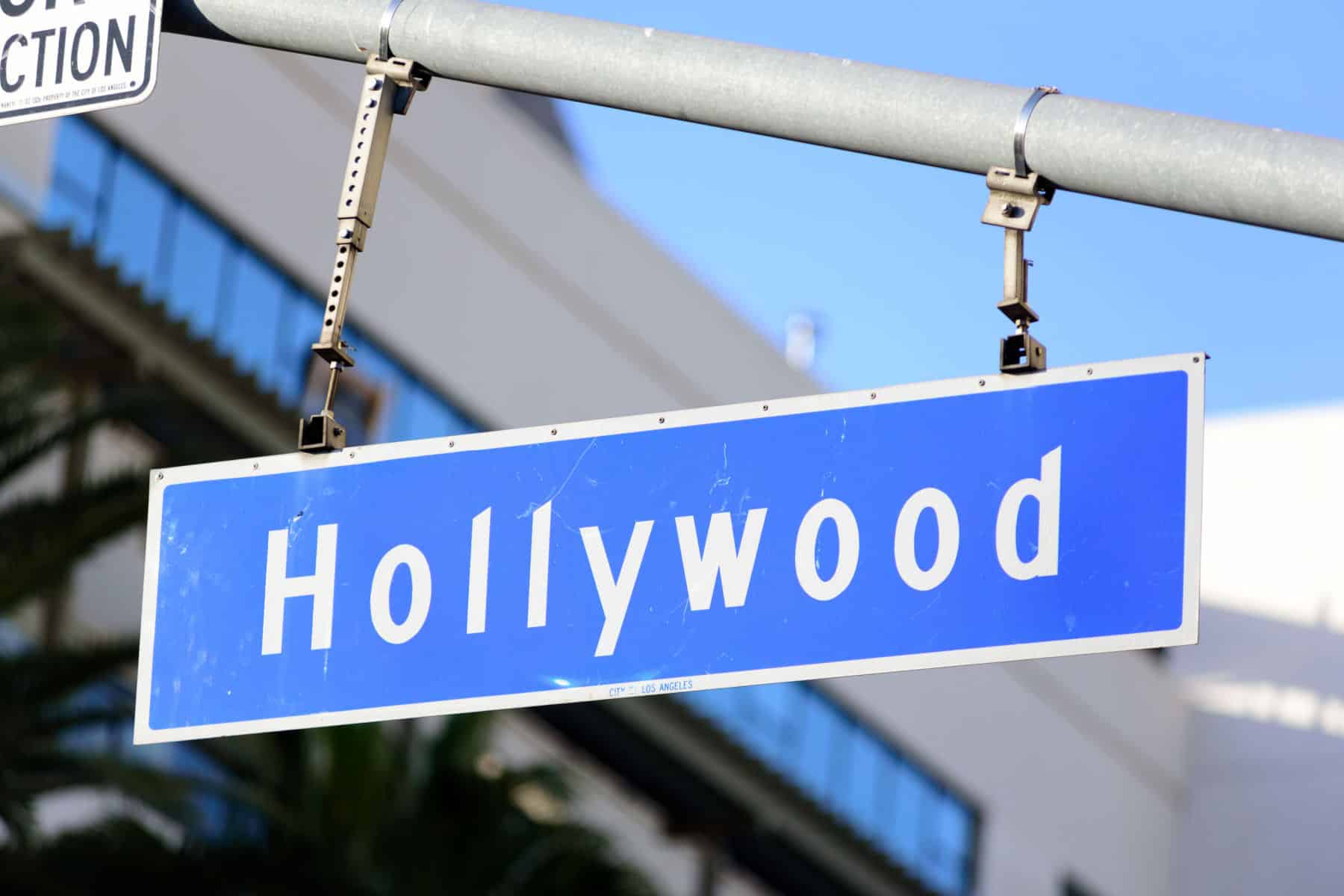
The First Star Was Awarded To Joanne Woodward
The project was officially launched in 1958, and the first star was awarded to actress Joanne Woodward on February 9, 1960. Over the next few years, hundreds of stars were added to the Walk of Fame, with ceremonies held to honor the celebrities who were receiving the honor.
In 1978, the Walk of Fame was designated as a historic landmark by the City of Los Angeles. Since then, the Walk has been expanded and improved, with the addition of new stars and the renovation of the sidewalk.
Today, the Walk of Fame is one of the most popular tourist attractions in Hollywood, drawing millions of visitors each year. It remains a lasting tribute to the entertainment industry and the many talented individuals who have contributed to its success over the years.

24. Santa Cruz Beach Boardwalk
Our next California landmark features the only major seaside amusement park remaining on the West Coast of the United States. It’s also the oldest amusement park in California. This site located along a scenic mile-long public beach on Monterey Bay National Marine Sanctuary.
At #24 on our list of the Best California Landmarks is the Santa Cruz Beach Boardwalk.
It’s a seaside amusement park located in Santa Cruz, California that has a long and rich history that dates back over a century.
In 1865, a businessman named John Leibrandt built a bathhouse on the beach in Santa Cruz, which he named the “Santa Cruz Plunge.” Over the years, other businesses were built around the Plunge, including a dance hall, a casino, and a roller skating rink.
Fast forward to 1904. That’s when local businessman Fred Swanton purchased the Plunge and the surrounding businesses. He demolished the old buildings and built the first Santa Cruz Beach Boardwalk, which opened on June 22, 1907.
In a preview of what folks would be treated to almost seventy years later when legalized casino gaming was approved by the citizens of New Jersey, Swanton’s Boardwalk initially featured a casino, a Ferris wheel, a roller coaster, and other attractions.

It Became An Amusement Park
Over the years, the Boardwalk continued to expand and add new rides and attractions. In 1911, the Boardwalk’s Giant Dipper roller coaster was built, and it remains one of the park’s most popular attractions to this day.
Other notable rides include the Looff Carousel, which was built in 1911 and is one of the oldest wooden carousels in the United States, and the Sky Glider, a chairlift that offers panoramic views of the park and the ocean.
The Boardwalk continued to play a significant role turning its attention to the surfing culture gaining popularity in Southern California. In the 1930s and 1940s, surfers began riding the waves near the Boardwalk, and the sport quickly became popular nationwide.
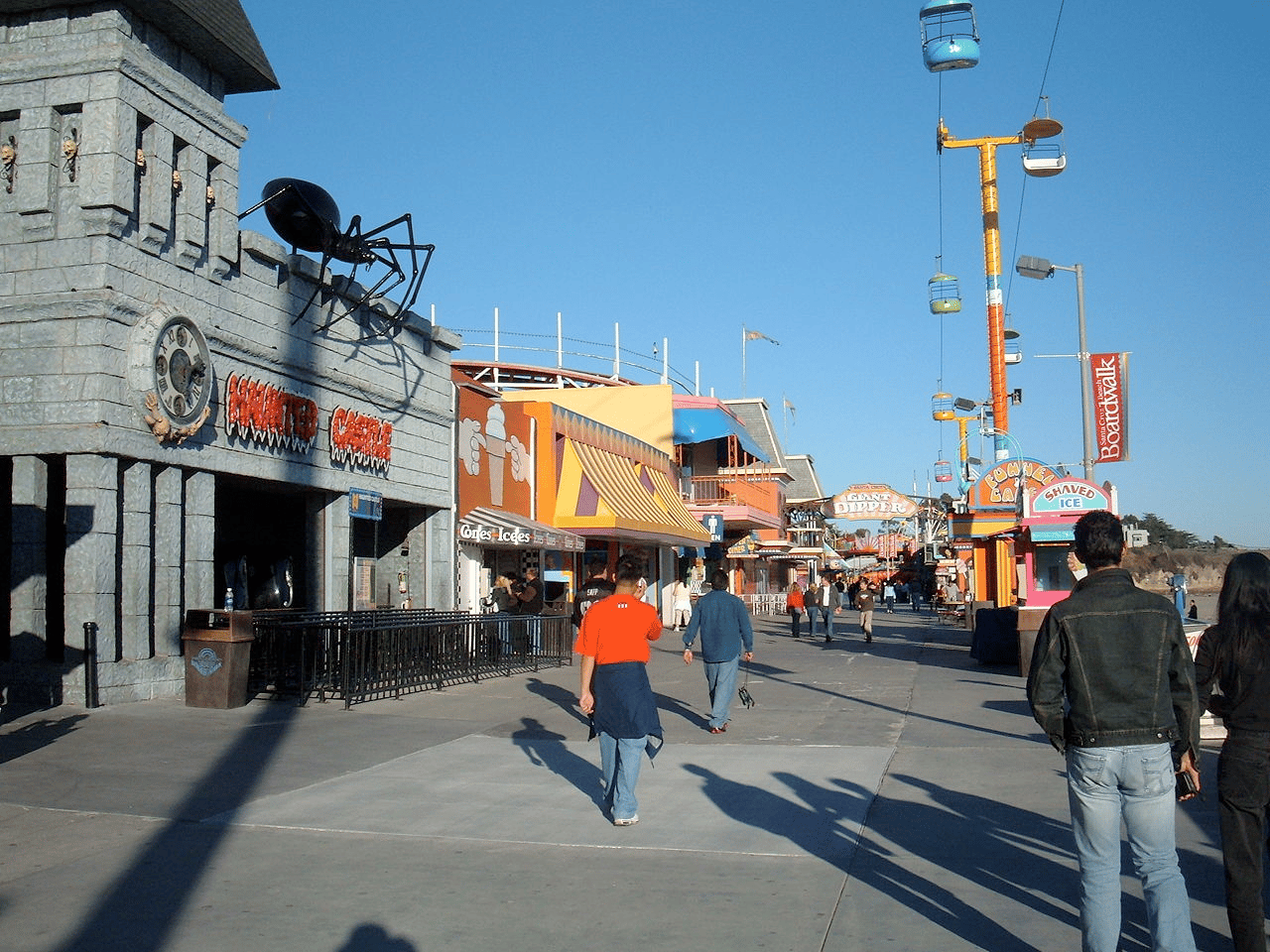
The First Surfing Championship Was Held At The Boardwalk
In 1959, the first surfing competition in the United States, the West Coast Surfing Championships, were actually held at the Boardwalk.
Today, the Santa Cruz Beach Boardwalk is one of the oldest and most popular seaside amusement parks in the United States.
It’s a place which features dozens of rides and attractions, including roller coasters, water rides, and carnival games. It also hosts a variety of events throughout the year, including concerts, festivals, and fireworks shows.
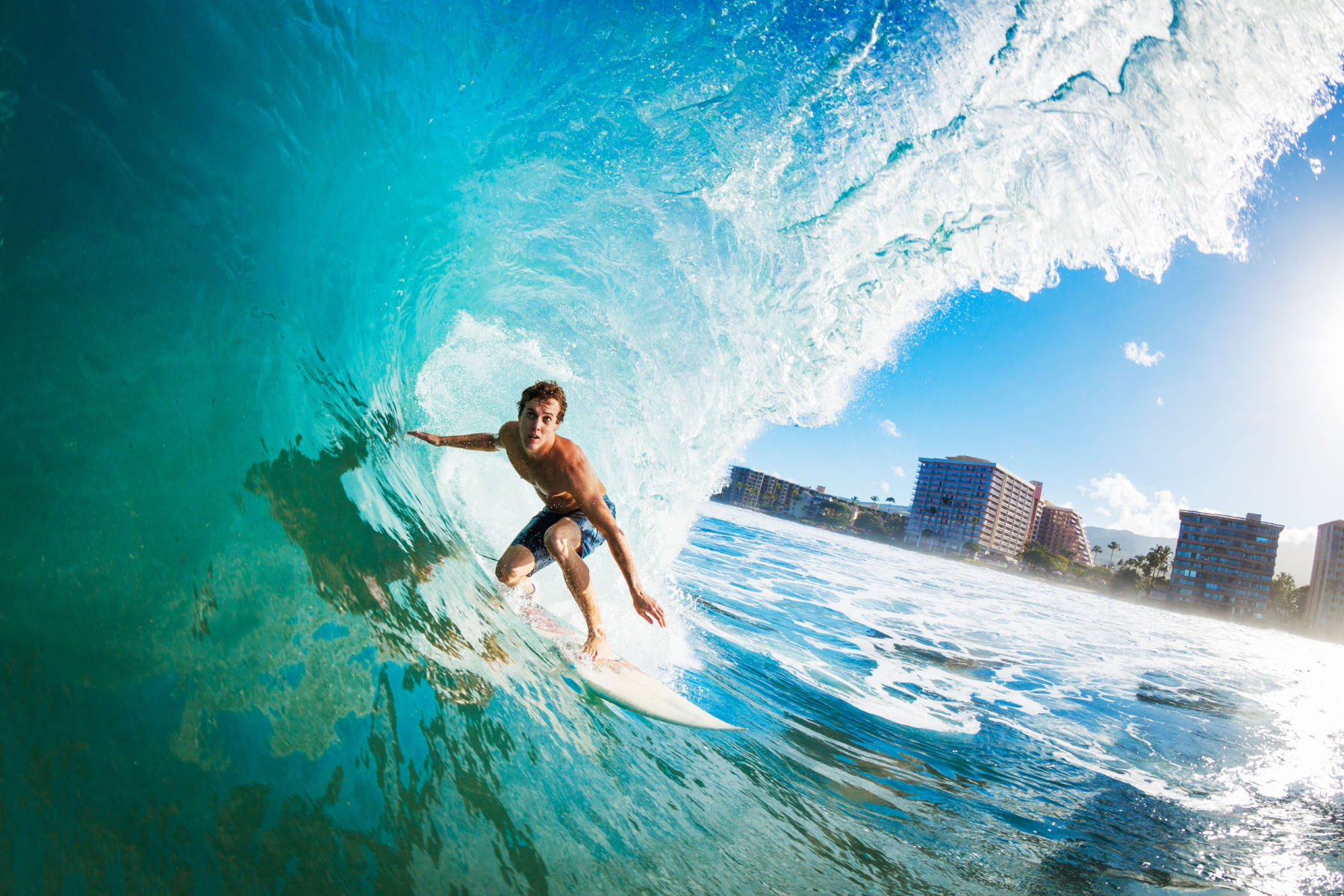
23. Napa Valley
What makes our next California landmark so unique? What makes Napa so unique? Location, climate and terroir: mountains, benchlands and valley floors, diurnal temperature swings, fog and marine air flow, over 100 types of soil. All of this combines to make it the special place that it is.
Why, in fact, it’s a place that you’ll want to raise a glass to. At #23 on our list of the Best California Landmarks is Napa Valley.
Napa Valley is a world-famous wine-growing region located in Northern California, known for producing high-quality wines and attracting tourists from around the world. The region has a rich history that dates back to the early 19th century.
The area now known as Napa Valley was originally inhabited by various Native American tribes. In the early 1800s, Spanish explorers arrived in the area and established a mission in nearby Sonoma. The first European settlers in Napa Valley were George C. Yount and Nathan Coombs, who arrived in the area in the 1830s.
The region’s wine industry began in the mid-19th century, when immigrants from Italy, Germany, and other European countries began planting vineyards and producing wine.
By the 1880s, Napa Valley had become one of the premier wine-producing regions in the world, with over 140 wineries in operation.
Napa Valley In The 20th Century
However, the industry suffered a setback in the early 20th century, as Prohibition laws made the production and sale of alcohol illegal in the United States. Many wineries were forced to close, and the industry did not fully recover until the 1960s.
In the 1960s and 1970s, a new generation of winemakers began to emerge in Napa Valley, producing high-quality wines that gained international recognition. The region’s reputation for producing premium wines grew rapidly, and by the 1980s, Napa Valley had become a major tourist destination, attracting wine enthusiasts from around the world.
Today, Napa Valley is home to over 500 wineries and is known for producing some of the world’s most highly-regarded wines, including Cabernet Sauvignon, Chardonnay, and Pinot Noir.
The region continues to be a popular destination for wine tasting, fine dining, and luxury tourism.

22. Palace of Fine Arts in San Francisco
Our next California landmark is a monumental structure located in the Marina District of San Francisco, California, originally constructed for the 1915 Panama–Pacific International Exposition to exhibit works of art. Completely rebuilt from 1964 to 1974, it is the only structure from the exposition that survives on site.
At #22 on our list of the Best California Landmarks is the Palace of Fine Arts in San Francisco.
As noted above, it was originally constructed for the Panama-Pacific International Exposition in 1915, which was a World’s Fair held to celebrate the completion of the Panama Canal and to showcase San Francisco’s recovery from the devastating 1906 earthquake and fire.
The Palace was designed by the renowned architect Bernard Maybeck, who was inspired by Greek and Roman architecture and sought to create a monumental structure that would evoke a sense of awe and wonder in visitors.
The Palace was built using temporary materials such as wood and plaster, and was intended to be demolished after the fair was over.
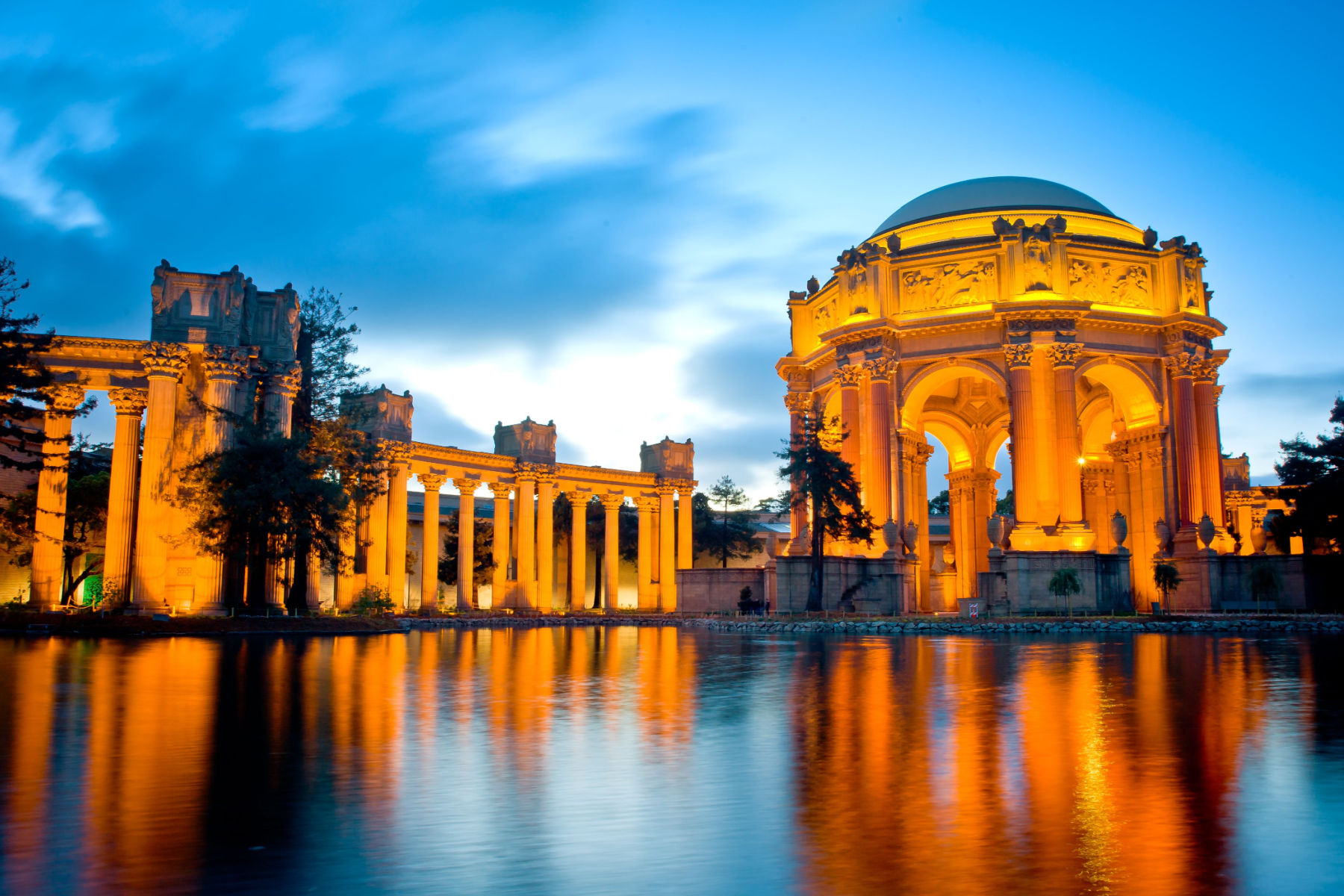
The Palace Proved To Be Quite Popular
However, the Palace proved to be so popular that it was saved from demolition and became a permanent fixture in San Francisco. In the years after the fair, the Palace fell into disrepair and was nearly demolished several times, but was ultimately restored and renovated in the 1960s and 1970s.
Today, the Palace of Fine Arts is a popular destination for tourists and locals alike, and is used for a wide variety of cultural and artistic events. The Palace’s stunning Beaux-Arts architecture and serene lagoon make it a favorite spot for wedding photos, and it is also home to a theater, art galleries, and several restaurants.
The Palace has been featured in numerous films, TV shows, and advertisements, and is widely regarded as one of the most beautiful and unique structures in San Francisco.
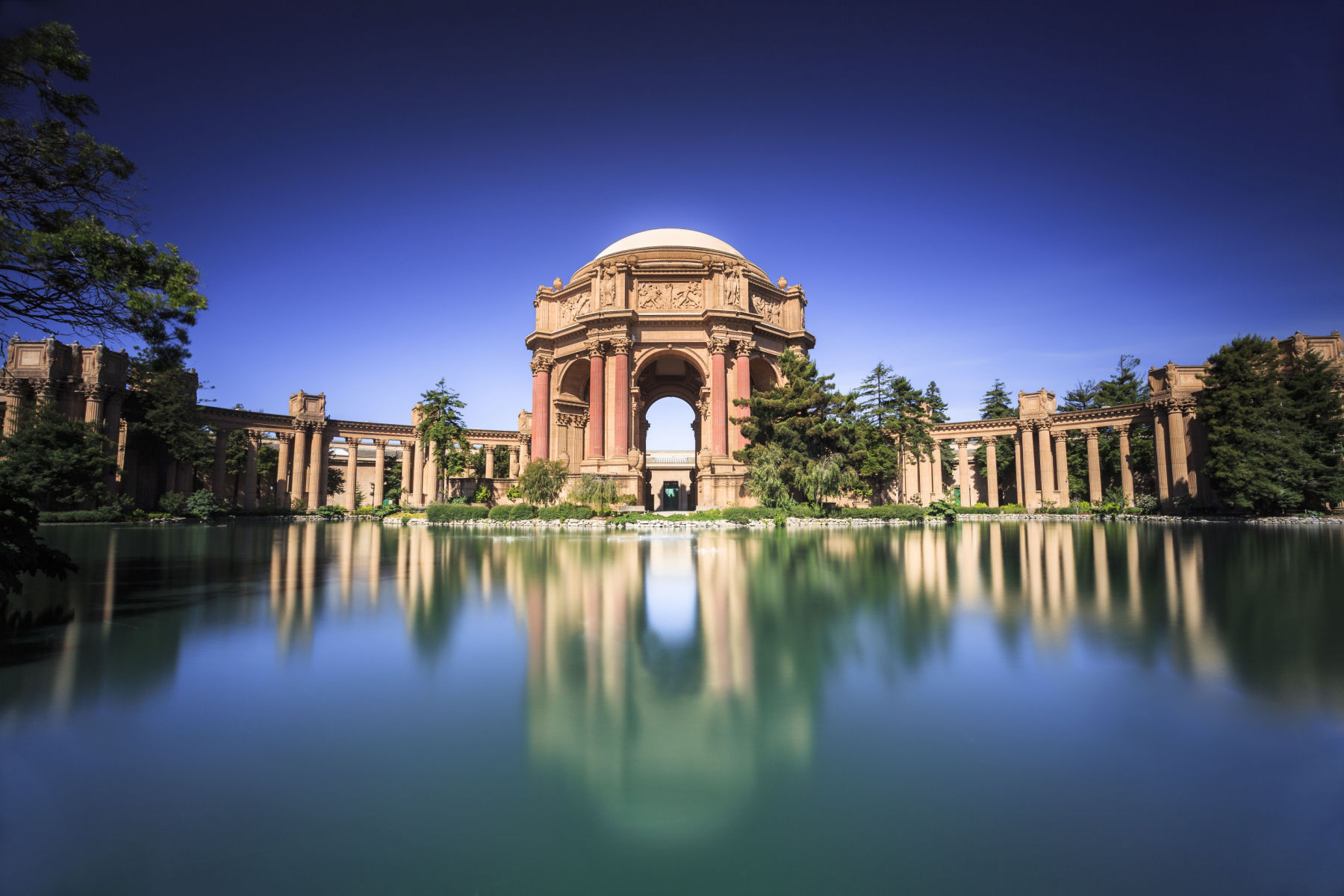
21. Santa Monica Pier
Our next California landmark was the first concrete pier on the West Coast. It quickly gained a reputation as the best fishing spot in Santa Monica.
At #21 on our list of the Best California Landmarks is the Santa Monica Pier.
The Santa Monica Pier has a rich history that dates back over a century.
The pier was originally built in 1909 as a municipal pier, designed to serve as a recreational destination for the growing population of Los Angeles. The pier was built using concrete and steel, making it one of the longest and most durable piers in the world at the time.

Santa Monica Pier | Courtesy of Wikimedia Commons
It Served As A Hub Of Activity For Local Residents & Tourists
In the early years of the pier, it served as a hub of activity for local residents and tourists alike. The pier featured a variety of attractions, including a carousel, a Ferris wheel, and a roller coaster. It also served as a center for fishing and boating, with a large bait and tackle shop located on the pier.
During World War II, the pier was used as a military outpost and was closed to the public. After the war, the pier was renovated and reopened, with new attractions added to the site, including an aquarium and an amusement park.
In the 1960s and 1970s, the pier became a popular destination for counterculture movements and was the site of many protests and demonstrations. In the 1980s, the pier was once again renovated, with new attractions added and the pier’s infrastructure modernized.
Today, the Santa Monica Pier remains a popular destination for tourists and locals alike, featuring a wide variety of attractions, including restaurants, shops, and a small amusement park.
The pier also serves as a center for fishing and other recreational activities, and it remains a beloved landmark and symbol of Southern California’s rich history and culture.
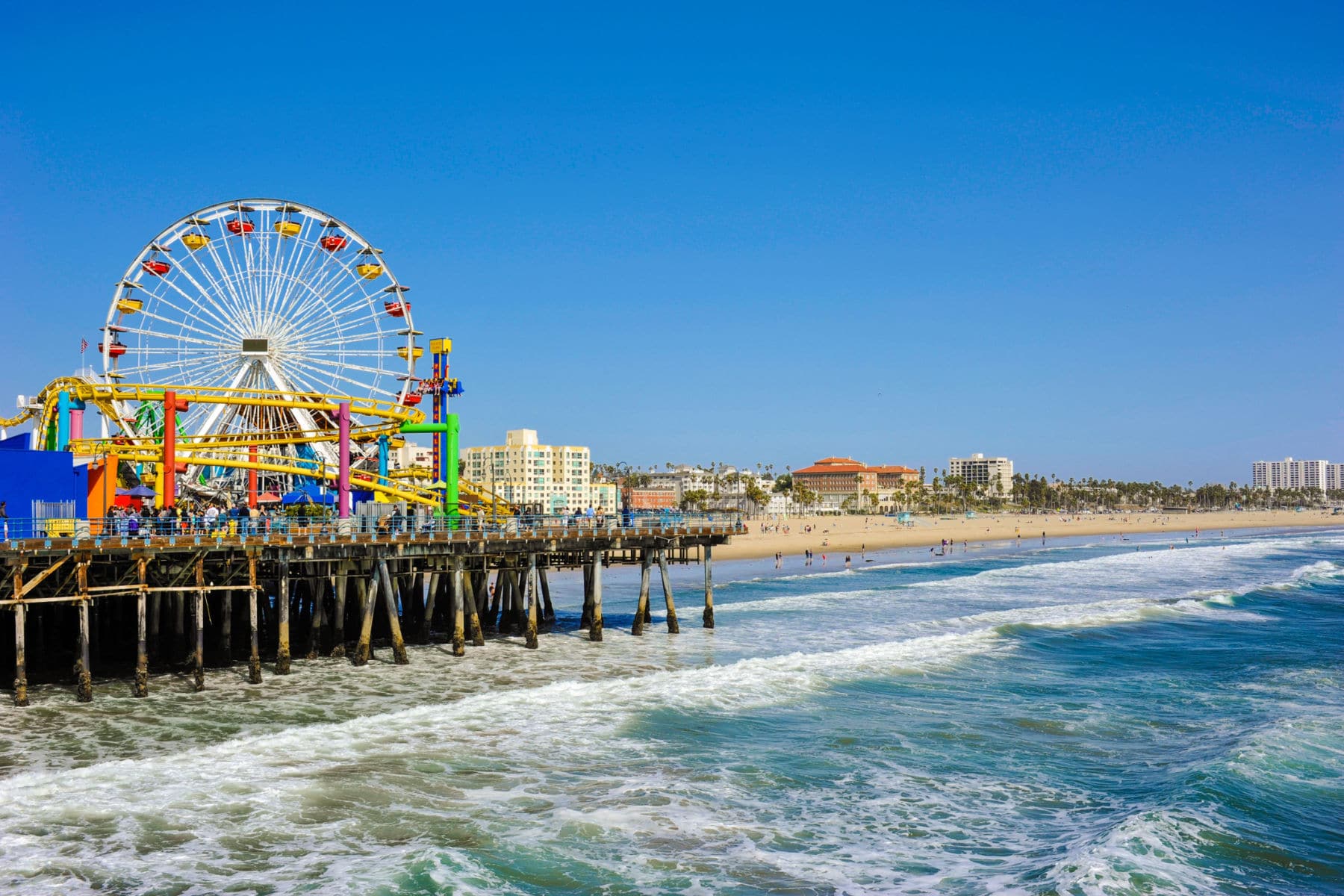
Top 20 California Landmarks
20. Hearst Castle
We’re on to the Top 20 California Landmarks. It’s important to point out that California is a land of contrasts and perhaps this is best illustrated as we go to our next site which is one of the most magnificent castles ever constructed.
At #20 on our list of the Best California Landmarks is Hearst Castle.

Map of Hearst Castle grounds | Courtesy of Wikimedia Commons
William Randolph Hearst
William Randolph Hearst was the founder of the Hearst Corporation, one of the largest media companies in the world.
Hearst’s most significant contribution was his role in transforming the newspaper industry in the late 19th and early 20th centuries. He owned several newspapers, including the San Francisco Examiner, the New York Journal, and the Chicago American, and used them to create a powerful media empire that influenced public opinion and political affairs.
Hearst was known for his sensationalist journalism, which involved the use of bold headlines, sensational stories, and exaggerated accounts of events to attract readers. He was also known for his support of yellow journalism, a type of journalism that emphasizes scandal and sensationalism over accuracy and impartial reporting.
In addition to his role in the media industry, Hearst was also involved in politics. He served as a member of the United States House of Representatives from 1903 to 1907 and ran unsuccessfully for mayor of New York City and governor of New York.
Hearst’s legacy in the media industry is still felt today, as the Hearst Corporation continues to be a major player in the media world, owning newspapers, magazines, television stations, and other media outlets around the world.

“Citizen Kane” tells the story of Charles Foster Kane, a wealthy newspaper magnate, and politician, who dies at the beginning of the film, and the attempts by a reporter to uncover the meaning of Kane’s last words: “Rosebud.” The film was based on the life and legacy of William Randolph Hearst. (Photo Courtesy of Wikimedia Commons)
Hearst Castle
Hearst Castle is a historic mansion located on a hilltop overlooking the Pacific Ocean near San Simeon, California. It was designed by architect Julia Morgan for newspaper magnate William Randolph Hearst, and is now a popular tourist attraction and National Historic Landmark.
Construction on the castle began in 1919, and continued for over 20 years. Hearst was heavily involved in the design of the mansion, which he called “La Cuesta Encantada” or “The Enchanted Hill”.
Hearst worked closely with Julia Morgan to create a sprawling estate that combined elements of Mediterranean, Gothic, and Renaissance architecture. The mansion features 165 rooms, including 38 bedrooms, 41 bathrooms, a movie theater, an indoor and outdoor pool, and a Roman temple.
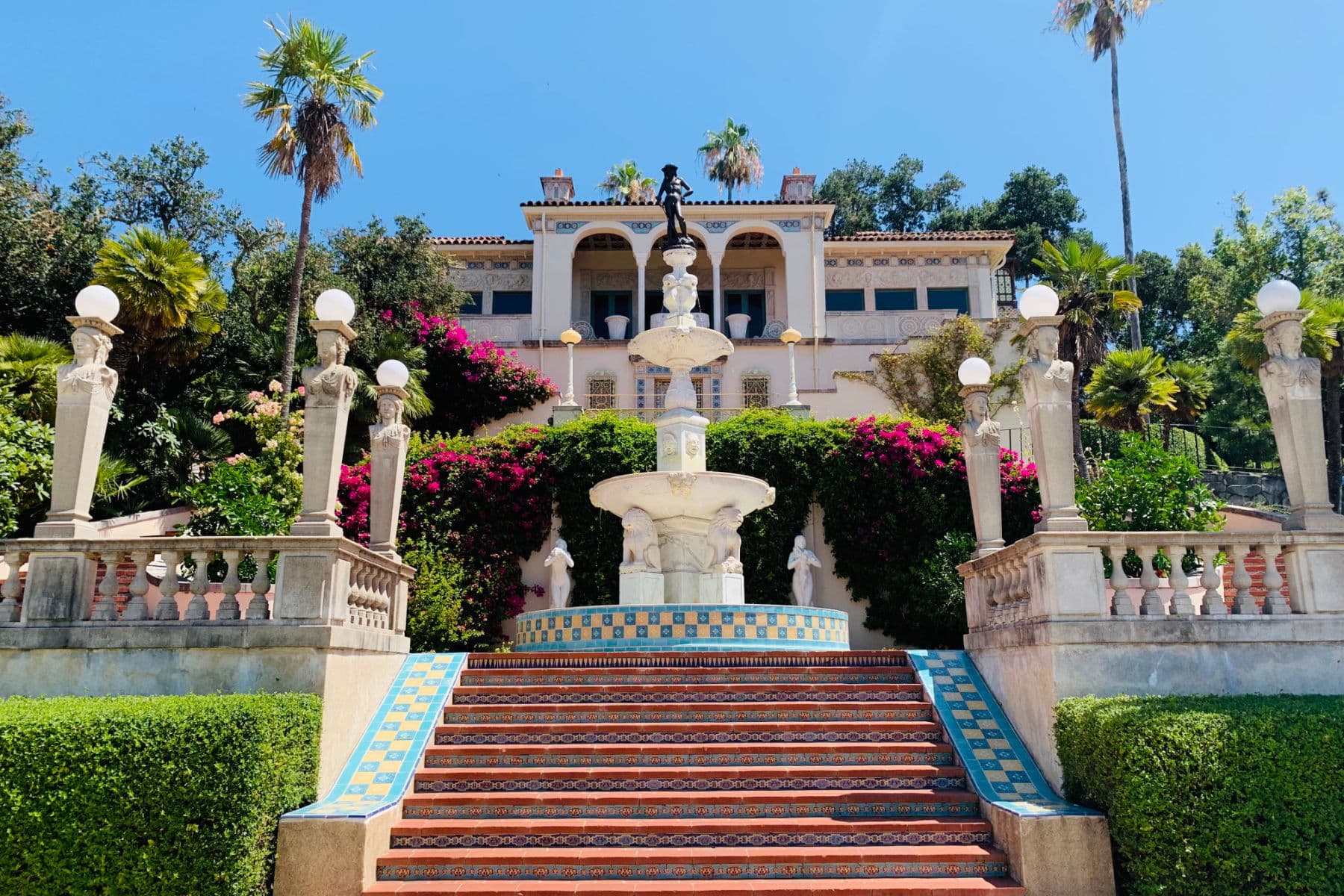
It Was A Gathering Place For Celebrities
Hearst Castle became a gathering place for celebrities, politicians, and artists, and was known for its lavish parties and opulent furnishings.
William Randolph Hearst was a collector of art and antiquities. He filled the mansion with a vast collection of European and Mediterranean art, sculptures, and artifacts. Some of the most notable pieces in the collection include ancient Greek vases, Renaissance paintings, and Gothic tapestries.
After Hearst’s death in 1951, the castle was donated to the state of California and became a state park. Today, visitors can take guided tours of the mansion and its grounds, exploring the stunning architecture, art, and history of this iconic California landmark.
Hearst Castle has been featured in many films and television shows, and has become a symbol of the glamour and excess of the Golden Age of Hollywood. It remains a beloved destination for tourists from around the world, who come to marvel at the beauty and grandeur of this magnificent estate.

19. Griffith Park & Observatory
From a celebrated castle which hosted Hollywood Stars to an amazing place where you can see the real ones. At #19 on our list of the Best California Landmarks is Griffith Park & Observatory.
It’s a historic park and observatory located in Los Angeles, California. The park was founded in 1896 and has since become a beloved destination for locals and tourists alike.
The land on which the park now stands was originally owned by Antonio Feliz, a wealthy landowner who received the property as a grant from the Spanish government.
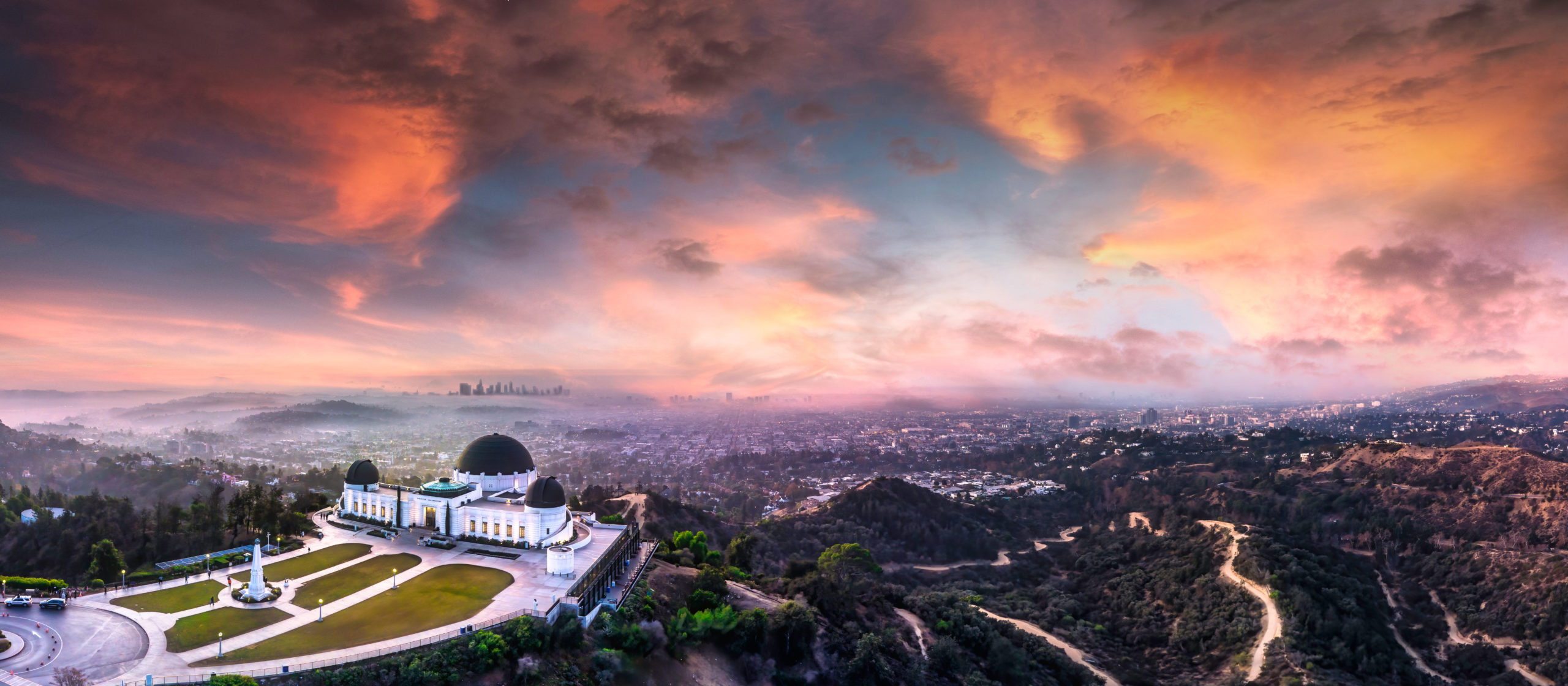
Griffith J. Griffith
In 1882, Colonel Griffith J. Griffith (what a wonderful name!), a Welsh-born philanthropist, purchased the land and donated it to the city of Los Angeles, with the stipulation that it be used as a public park.
Griffith was passionate about promoting public education and astronomy. He donated funds to build an observatory within the park. The observatory was completed in 1935. It quickly became a popular destination for stargazers and astronomers alike
In addition to the observatory, Griffith Park is home to many other landmarks and attractions, including the Griffith Park Zoo (now abandoned), the Greek Theatre, and the Griffith Observatory Planetarium.
The park also features hiking trails, picnic areas, and a golf course, among other recreational opportunities.
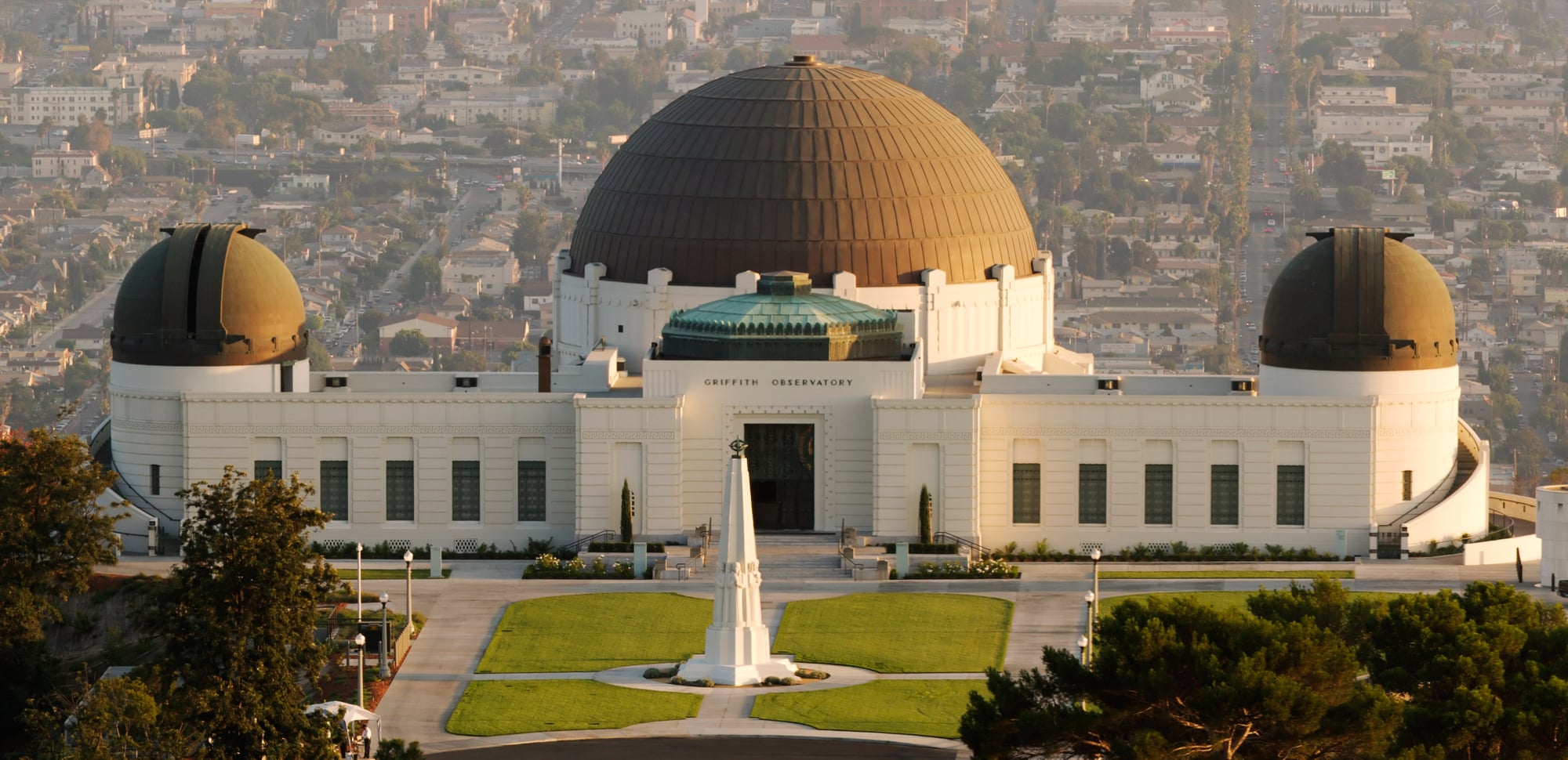
The Hollywood Connection
Over the years, Griffith Park and Observatory have played a significant role in the cultural life of Los Angeles.
The observatory has been featured in many films and television shows, including the James Dean classic “Rebel Without a Cause”.
It was prominently featured in the 2016 musical film “La La Land.” The film’s opening sequence shows the main characters, Mia and Sebastian, dancing among the crowds at the observatory, with the iconic Hollywood sign visible in the background.
The Griffith Observatory scene in “La La Land” has become one of the most memorable moments in the film, and it helped to bring the observatory to the attention of a new generation of moviegoers. Following the release of the film, the observatory saw a surge in visitors, and it continues to be a popular destination for tourists and locals alike.
The park has also hosted numerous concerts and events, including the annual Greek Theatre Summer Concert Series.
Today, Griffith Park and Observatory remain popular destinations for tourists and locals alike, offering stunning views of the city and the surrounding mountains, as well as a rich history and cultural significance.

Things To See & Do
Some of the things to see and do at Griffith Park & Observatory include:
- Griffith Observatory: The observatory is one of the park’s most popular attractions and offers visitors a chance to learn about astronomy and the universe. The observatory features a planetarium, exhibits, and live shows that explore the cosmos.
- Hiking: Griffith Park offers over 50 miles of hiking trails that take visitors through a diverse array of landscapes, including chaparral-covered hills, wooded canyons, and grassy meadows.
- Griffith Park Zoo: The zoo closed down in 1966 and it was replaced by the Griffith Park and Southern Railroad and the Travel Town Museum.
- Griffith Park Merry-Go-Round: This classic carousel from the 1920s is a favorite among visitors, especially children.
- Griffith Park & Southern Railroad: This train ride takes visitors on a tour of the park, passing by the observatory, the zoo, and other attractions.
- Griffith Park Golf Course: The Griffith Park Golf Course offers a challenging 18-hole course for golfers of all skill levels.
- Griffith Observatory: The Griffith Observatory offers visitors the chance to learn about the stars and space, and it also provides a great view of the city of Los Angeles.
- The Greek Theatre: The Greek Theatre is an outdoor concert venue that hosts a wide range of live music
18. Sequoia National Park
Just because we’re More Than Just Parks doesn’t mean that we’ve forgotten about them. At #18 on our list of the Best California Landmarks is Sequoia National Park.
Sequoia National Park is located in the southern Sierra Nevada mountains of California. It’s known for its giant sequoia trees, stunning landscapes, and diverse wildlife. The park has a rich history that dates back to the late 19th century.
In 1855, a group of explorers discovered the giant sequoia trees in the region, and by the late 1800s, the area had become a popular destination for tourists and naturalists.
In 1890, President Benjamin Harrison signed legislation creating Sequoia National Park, making it the second national park in the United States after Yellowstone National Park.

The Park’s Early Years Were Marked By Controversy & Conflict
The park’s early years were marked by controversy and conflict, as logging companies attempted to harvest the park’s valuable timber.
However, conservationists and environmentalists fought to protect the park, and in 1926, the park was expanded to include neighboring Kings Canyon National Park, forming what is now known as the Sequoia and Kings Canyon National Parks.
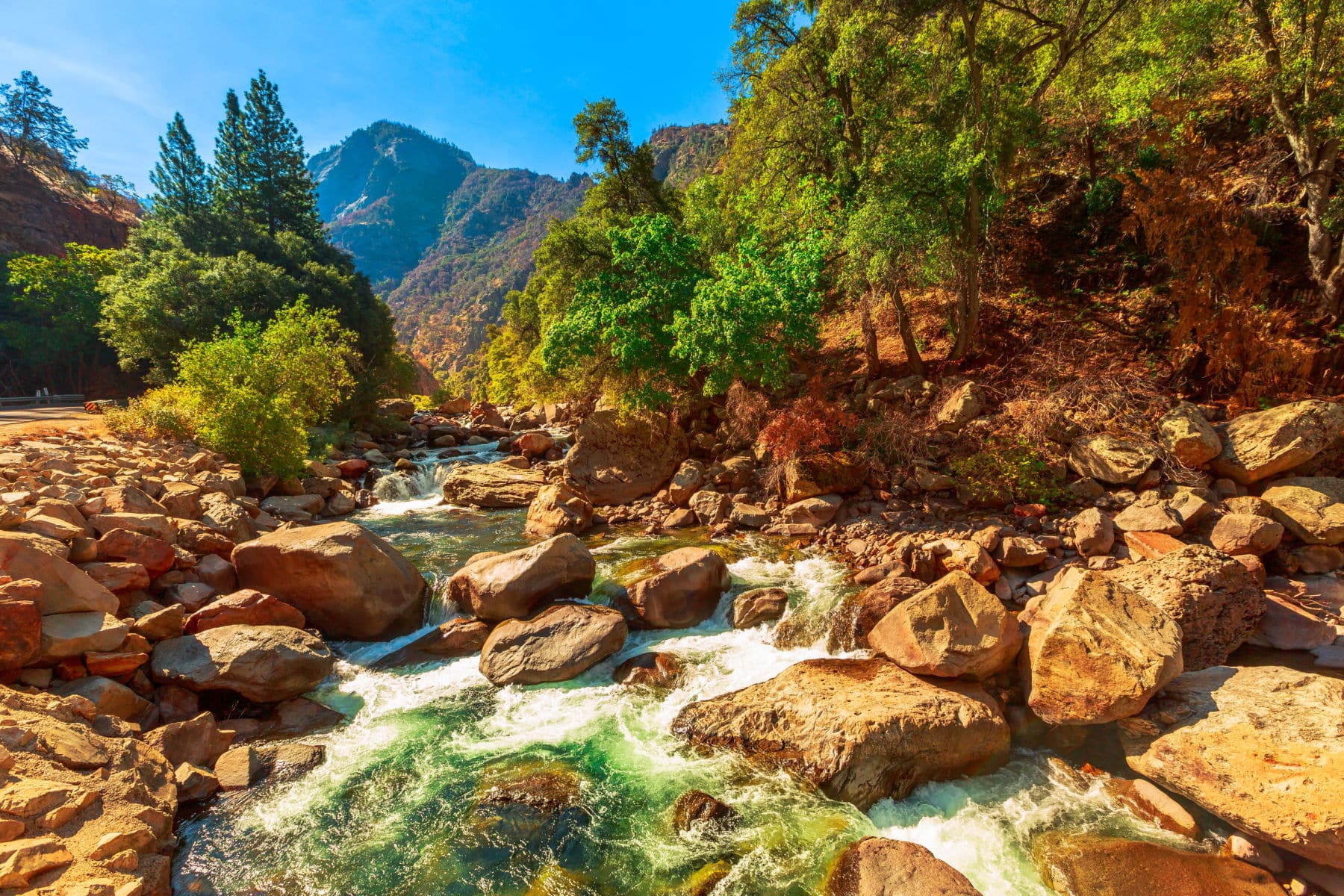
Throughout the 20th century, the park continued to attract visitors from around the world, and new attractions and amenities were added to the site, including hiking trails, campgrounds, and visitor centers. In the 1980s, the park was designated a UNESCO World Heritage Site, in recognition of its unique natural and cultural significance.
Today, Sequoia National Park is home to over 400 species of animals and plants, including black bears, mule deer, and mountain lions. The park’s giant sequoia trees, some of which are over 2,000 years old, remain a major draw for visitors, and the park continues to be a center for outdoor recreation, conservation, and education.
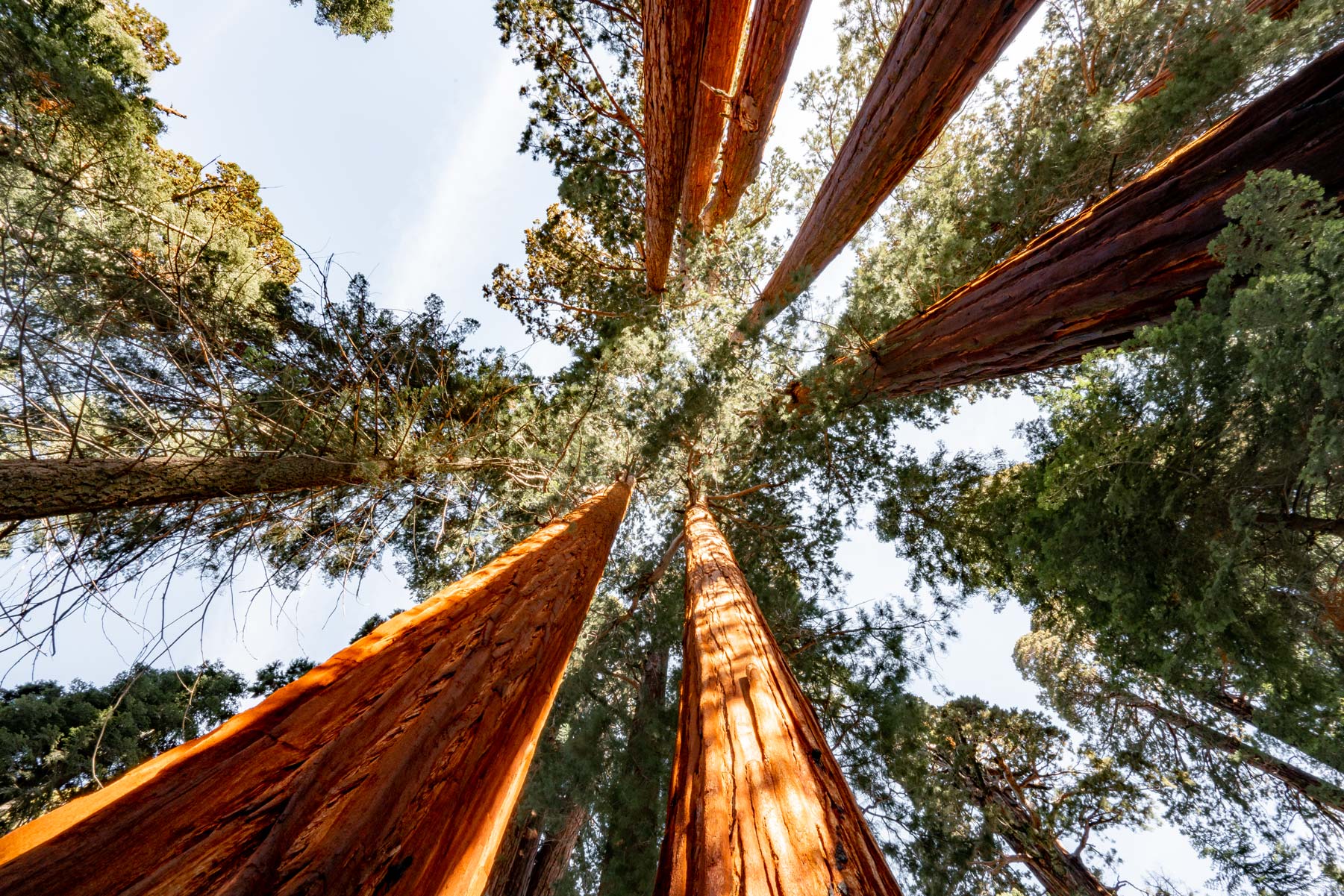
Things To Do At Sequoia
- Visit General Sherman Tree: This is the largest tree in the world by volume and is a must-see attraction when visiting the park.
- Hiking: The park has over 800 miles of hiking trails, ranging from easy walks to challenging backcountry treks. Some popular hikes include the Congress Trail, the High Sierra Trail, and the Tokopah Falls Trail.
- Wildlife Viewing: The park is home to a variety of wildlife, including black bears, mountain lions, mule deer, and coyotes. You can go on guided tours or explore the park on your own to spot these animals.
- Scenic Drives: The park has many scenic drives, including the Generals Highway, which provides breathtaking views of the park’s mountains and forests.
- Camping: There are many campgrounds throughout the park, ranging from primitive to full-service. Camping is a great way to experience the park’s natural beauty and serenity.
- Stargazing: The park is designated as a Dark Sky Park, making it an ideal place for stargazing. You can attend guided stargazing events or explore the park’s night sky on your own.
- Rock Climbing: The park has many challenging rock climbing routes, including the world-famous Moro Rock, which offers stunning views of the surrounding landscape.
- Winter Sports: During the winter, the park offers opportunities for skiing, snowshoeing, and sledding. The Wolverton and Grant Grove snow play areas are popular spots for families.
- Ranger Programs: The park offers a variety of ranger-led programs, including guided hikes, campfire programs, and nature talks. These programs are a great way to learn about the park’s natural and cultural history.
- Visit Crystal Cave: This stunning cave is located in the park and features beautiful formations, underground streams, and natural pools. Guided tours are available, and the cave is open seasonally.
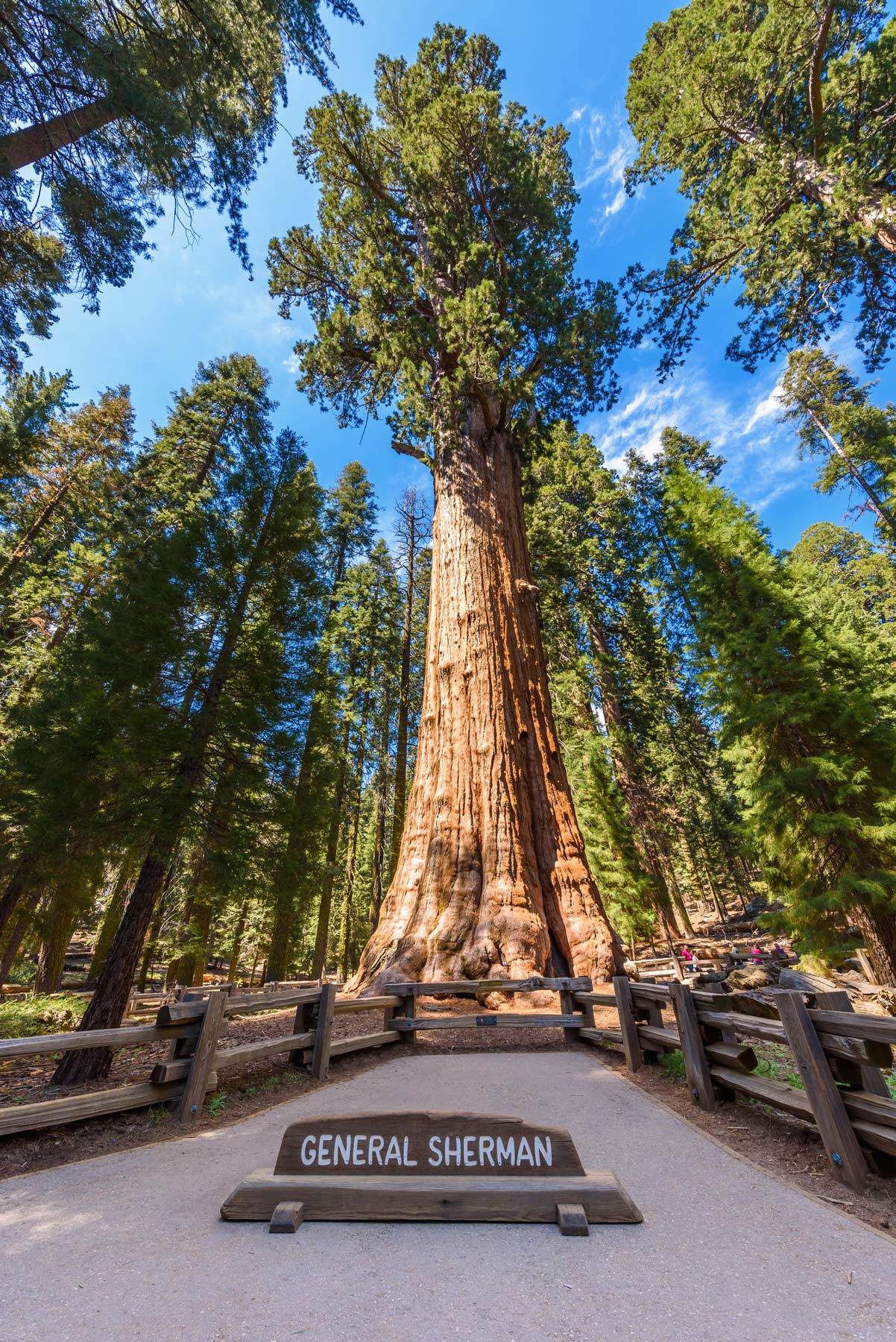
17. Belmont Park
Our next California landmark is home to 12 thrilling rides, 6 adventurous attractions, and 3 oceanfront dining experiences. Classic favorites such as our Bumper Cars, Carousel, and a Tilt-a-Whirl sit alongside modern rides such as the Beach Blaster, Octotron, and Control Freak.
At #17 on our list of the Best California Landmarks is Belmont Park.
Belmont Park has a rich history that dates back over a century.
The park was originally built in 1925 as the Mission Beach Amusement Center, designed to serve as a recreational destination for the growing population of San Diego. The park featured a variety of attractions, including a roller coaster, a Ferris wheel, and a wooden plunge.
In the 1930s, the park was renamed Belmont Park, and many new attractions were added to the site, including a saltwater swimming pool, a dance hall, and a casino. During World War II, the park was closed to the public and was used as a training center for Navy pilots.

The Park Was Renovated & Reopened
After the war, the park was renovated and reopened, with new attractions added to the site, including a carousel and a miniature golf course. The park also served as a center for surfing, with a surf shop located on the premises.
In the 1970s and 1980s, the park fell into disrepair, and many of its attractions were dismantled or destroyed. However, in the 1990s, the park underwent a major renovation, with many of its historic attractions restored or rebuilt.
Today, Belmont Park remains a popular destination for tourists and locals alike, featuring a wide variety of attractions, including a roller coaster, a zip line, and a laser tag arena. The park also features a variety of shops and restaurants, and it remains a beloved symbol of San Diego’s rich history and culture.

16. Mission Basilica San Diego de Alcala
It’s impossible to prepare a list of the 25 Best California Landmarks without including the state’s historic missions. Have no fear because we haven’t. At #16 we have Mission Basilica San Diego de Alcala.
It’s the first of the 21 missions built in California by the Spanish Franciscans in the 18th century.
It was founded by Father Junipero Serra on July 16, 1769, and it remains an active parish to this day. The mission was built to spread Christianity among the local indigenous populations and to establish a Spanish presence in the region.
The original mission was destroyed by fire in 1775, but it was rebuilt and expanded over time. The mission was revitalized in 1931, using historic documents and remains to restore the mission to its former glory.
Today, the mission is a popular tourist destination, and it serves as a significant historical and cultural landmark.
Visitors can explore the mission’s beautiful gardens, museum, and historical exhibits, as well as attend mass at the active parish. The mission remains a vibrant part of Catholic history in the new world.

Top 15 California Landmarks
15. Coronado Island
We’re on to our Top 15 California Landmarks. Our next place is known for its gorgeous beaches. It offers a myriad of choices for fun in the sun.
There are five white sand havens on the island including: Coronado Central Beach, Coronado Dog Beach, Glorietta Bay Beach, Silver Strand State Beach and the Ferry Landing Marketplace.
At #15 on our list of the Best California Landmarks is Coronado Island.
Coronado Island, also known as the “Enchanted Island,” is a beautiful resort city located just across the San Diego Bay from downtown San Diego, California. The island has a rich history that dates back to the early 16th century.
In 1542, the island was first explored by the Spanish explorer Juan Rodriguez Cabrillo. However, it wasn’t until the late 1800s that the island began to attract permanent settlers.
In 1886, the Hotel del Coronado was built on the island, which quickly became a popular destination for wealthy tourists.
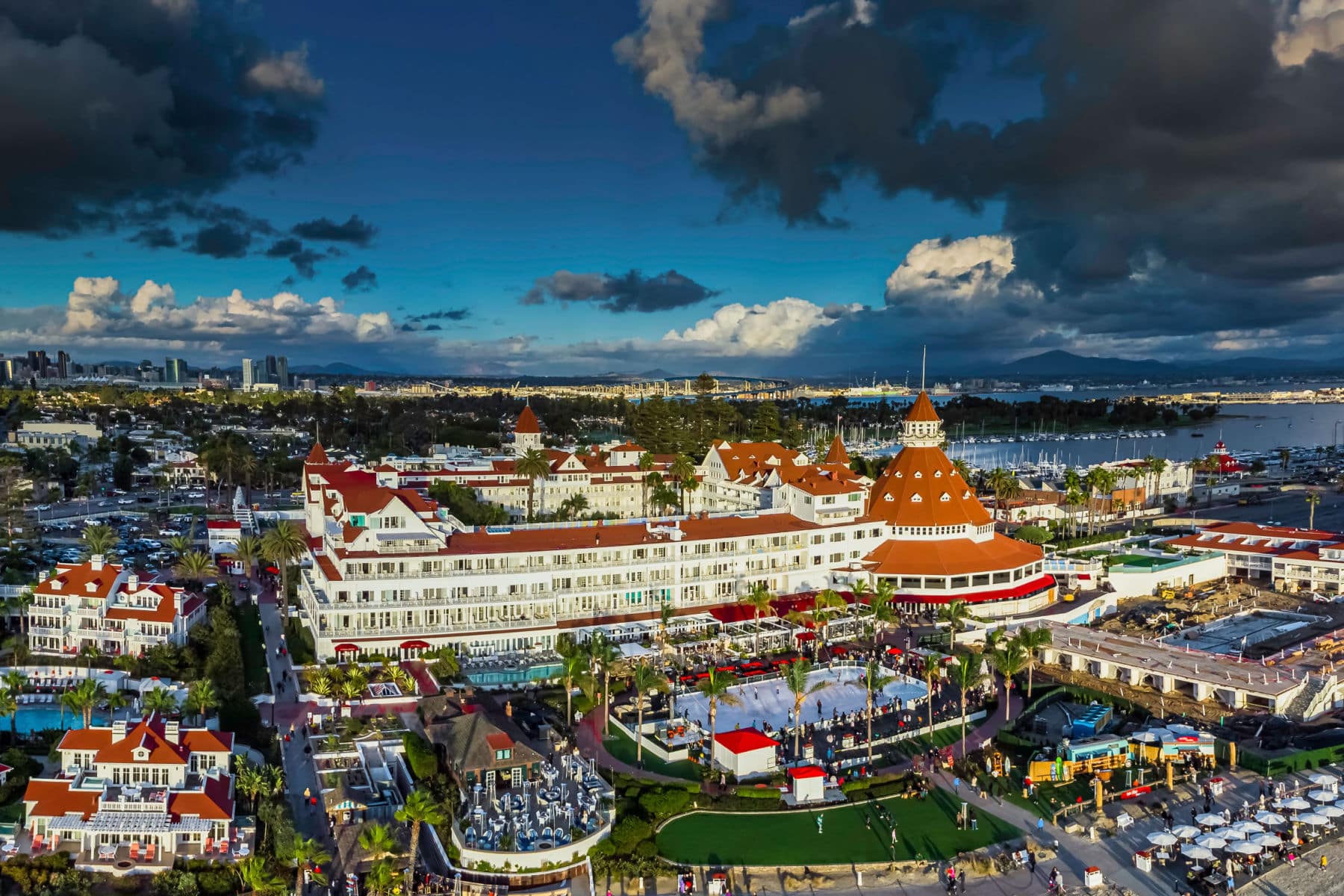
The Hotel Was Designed To Be A Grand Resort
The hotel was designed to be a grand resort that would attract wealthy travelers from around the world. The hotel’s design was influenced by the Victorian era, with turrets, spires, and ornate details. Over the years, the hotel has hosted a number of famous guests, including: Marilyn Monroe, Charles Lindbergh, and Franklin D. Roosevelt.
During World War II, the hotel was used as a training center for Navy officers. The island itself also played an important role in the war effort, with the Navy establishing a training center on the site.
In the post-war years, Coronado Island continued to grow as a resort destination, with many new hotels and attractions added to the site. Today, the island is home to a wide variety of activities, including beautiful beaches, world-class golf courses, and a vibrant downtown area filled with shops, restaurants, and entertainment venues.

Things To Do
Here are some of the top things to do on Coronado Island:
- Visit the Hotel Del Coronado: This iconic hotel, built in 1888, is a must-visit landmark on the island. It’s a stunning example of Victorian architecture and is one of the most famous hotels in the world. You can take a guided tour, stroll around the grounds, or enjoy a meal at one of the hotel’s restaurants.
- Explore the Beach: Coronado Island is home to some of the best beaches in Southern California, with miles of pristine sand and clear water. You can sunbathe, swim, surf, or simply take a leisurely walk along the beach.
- Rent a Bike: The island is relatively flat, making it an ideal place to explore on a bike. You can rent bikes from various shops on the island and take in the scenery at your own pace.
- Visit the Coronado Museum of History and Art: This museum offers exhibits that showcase the island’s rich history and culture, including exhibits on the hotel, Navy history, and local art.
- Take a Ferry Ride: You can catch a ferry from Coronado to downtown San Diego, which offers stunning views of the city skyline and the bay.
- Play Golf: Coronado Island is home to two world-class golf courses, the Coronado Municipal Golf Course and the Coronado Golf Course.
- Go Shopping: Coronado’s downtown area offers a range of boutique shops, art galleries, and specialty stores.
- Enjoy Water Sports: Visitors can participate in a variety of water sports, including paddleboarding, kayaking, and boating.
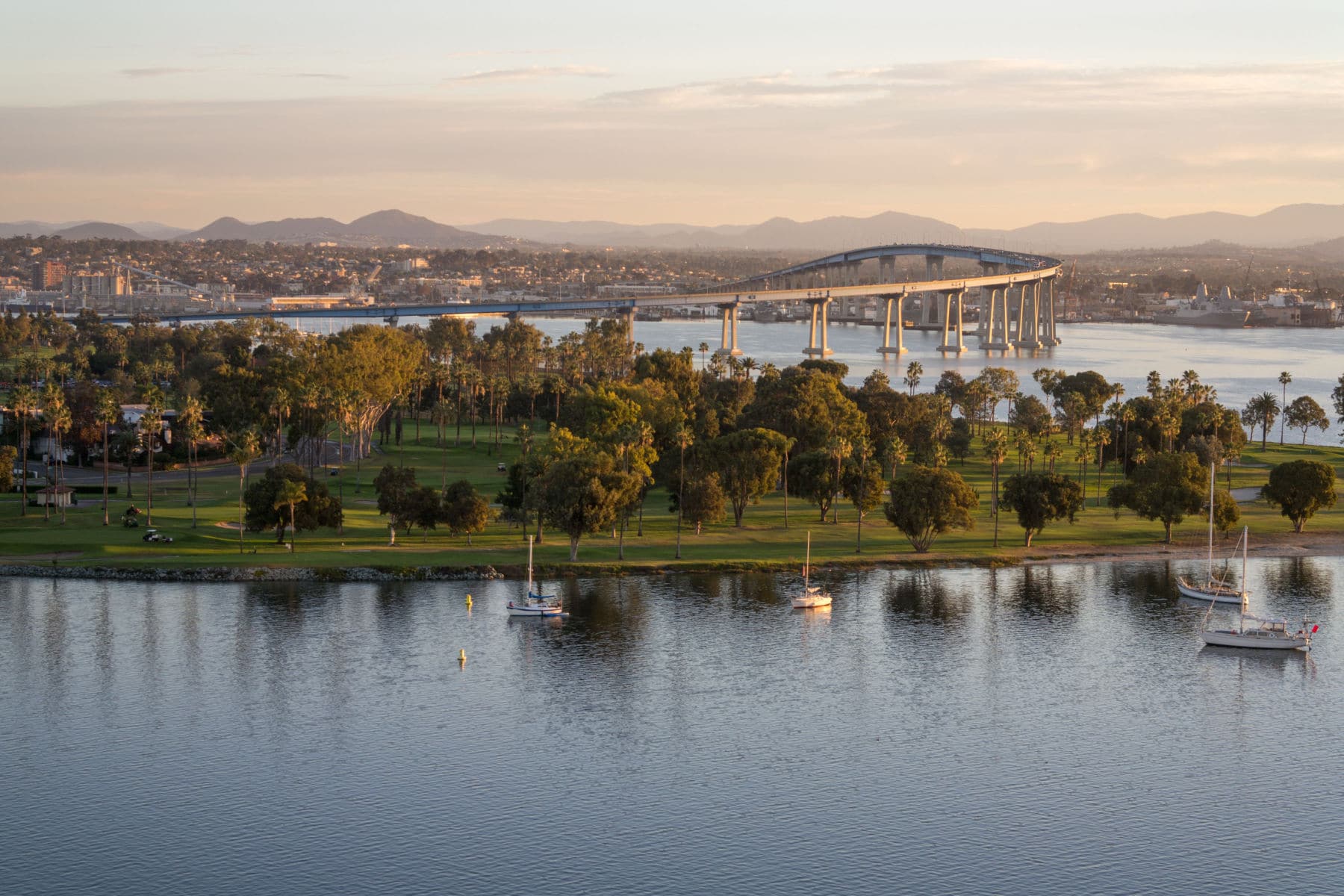
14. Rodeo Drive, Beverly Hills
Our next California landmark is one of the most famous streets in the world. The street is known for its collection of ultra high-end designer and boutique shops and has been featured in more than a few films — from “Beverly Hills Cop” to “Clueless.”
At #14 on our list of the Best California Landmarks is Rodeo Drive, Beverly Hills.
Rodeo Drive is a world-famous shopping district located in the heart of Beverly Hills, California. The street has a rich history that dates back to the early 1900s.
Originally, the street was known as a residential area, and it wasn’t until the 1930s that businesses began to move in. The first store to open on Rodeo Drive was a jewelry store called Laykin et Cie, which opened in 1936.

Beverly Hills, California | Courtesy of Wikimedia Commons
A Destination For High-End Shopping
In the 1950s and 1960s, Rodeo Drive began to gain a reputation as a destination for high-end shopping. Many luxury brands opened stores on the street, including: Chanel, Cartier, and Van Cleef & Arpels. The street’s reputation was further enhanced when it was featured in the movie “Pretty Woman” in 1990.
Today, Rodeo Drive is one of the most famous shopping streets in the world, with a reputation for luxury and exclusivity. The street is home to many of the world’s most famous luxury brands, including: Gucci, Prada, and Louis Vuitton.
In addition to shopping, Rodeo Drive is also known for its architecture and design. The street features a mix of modern and classic styles, with many buildings dating back to the early 20th century.
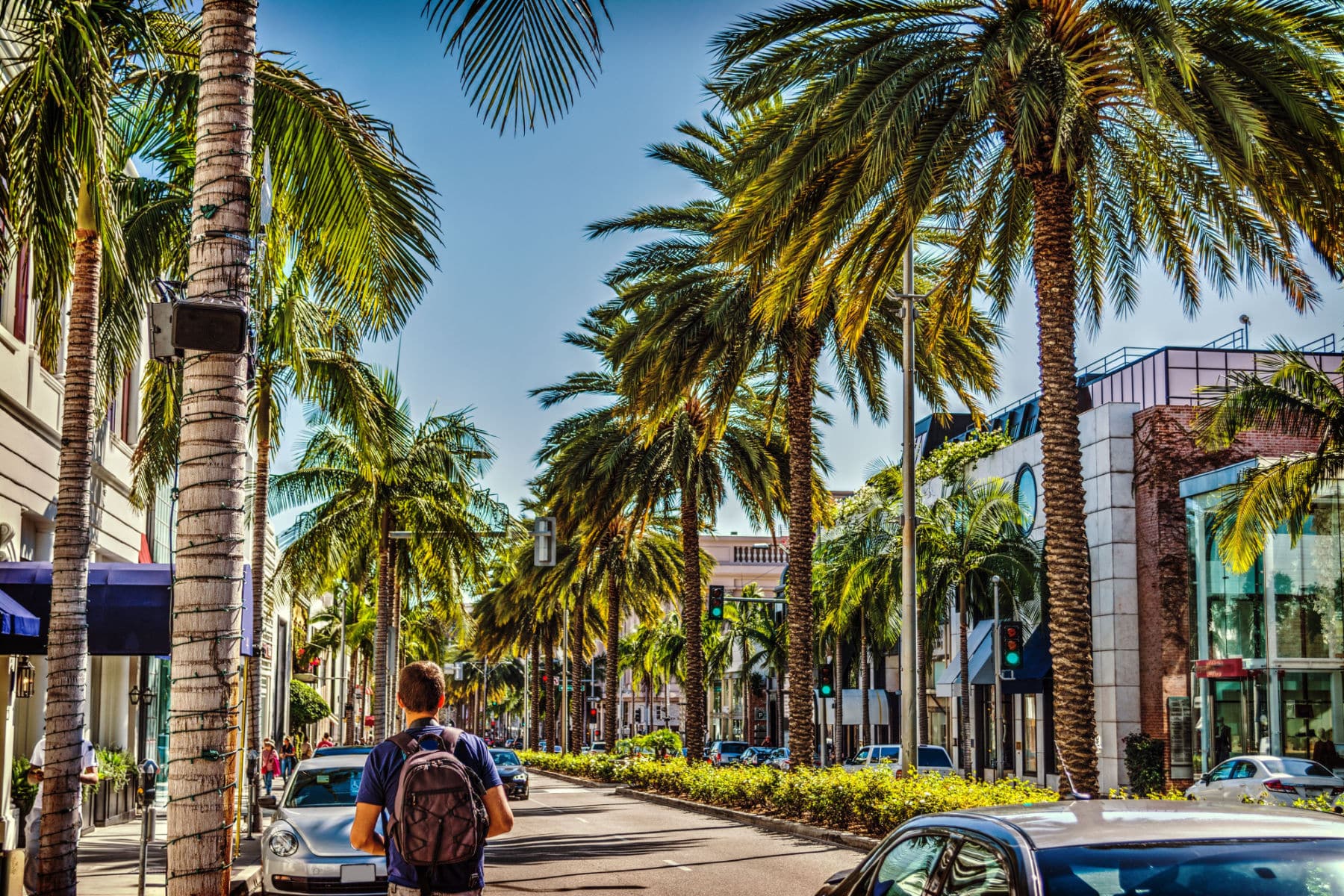
13. Fisherman’s Wharf
Our next California landmark is best known for being the location of Pier 39, great waterfront restaurants, Ghirardelli Square, San Francisco Maritime Museum, Musée Mécanique, the Cannery Shopping Center, a Ripley’s Believe it or Not museum, the Wax Museum.
At #13 on our list of the Best California Landmarks is Fisherman’s Wharf.
Fisherman’s Wharf began as a hub for the fishing industry in the late 19th and early 20th centuries. Italian immigrants, primarily from the Ligurian region of Italy, were among the first to settle in the area and establish fishing businesses.
In the early 1900s, the San Francisco fishing industry experienced a boom, and Fisherman’s Wharf became a bustling hub of activity. Fishermen would bring their daily catch to the wharf, which was then sold to local markets and restaurants.
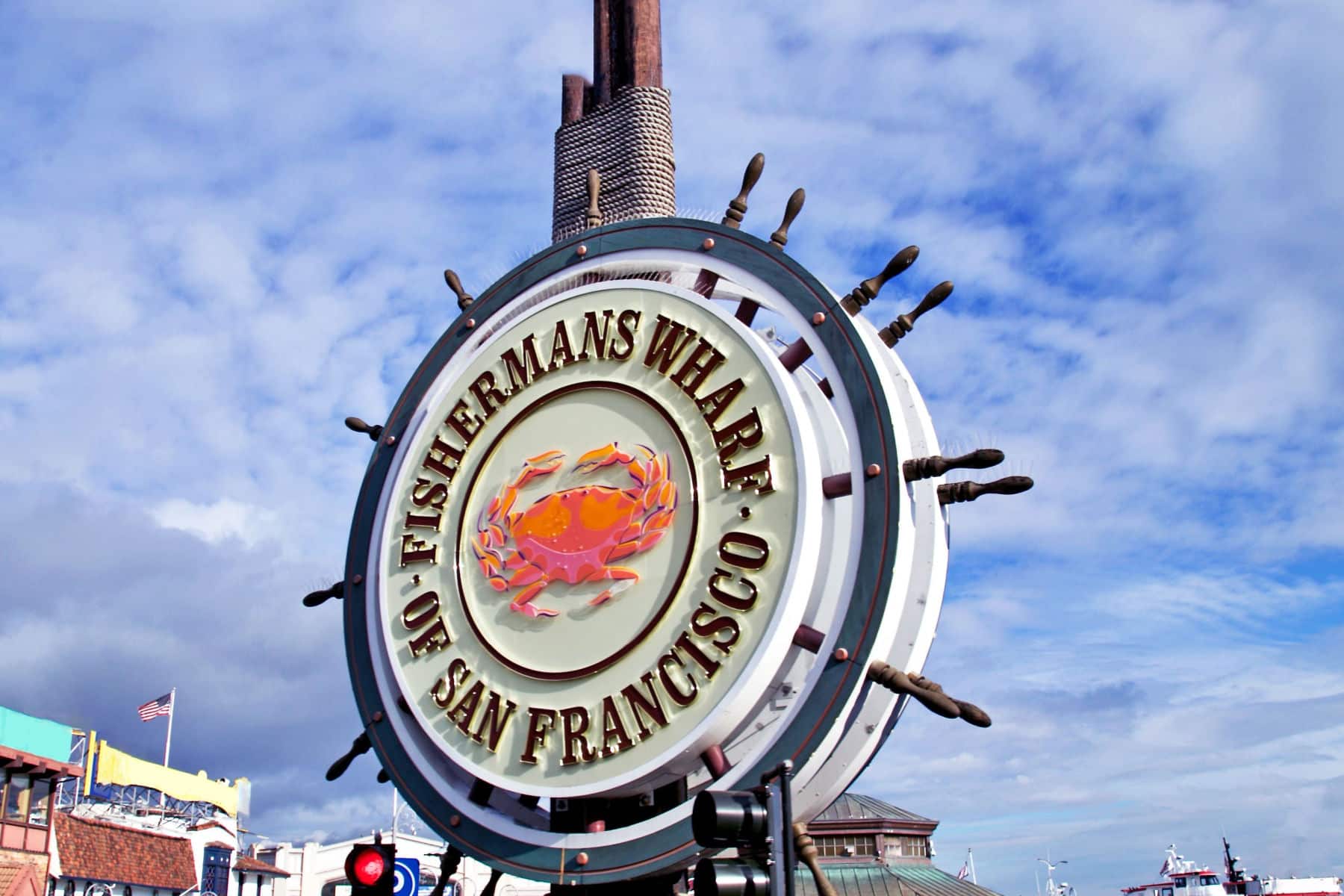
Fisherman’s Wharf Played A Critical Role In World War Two
During World War II, Fisherman’s Wharf played a critical role in the war effort, as it was used as a base for the Pacific Fleet and as a shipping hub for supplies and troops.
In the post-war years, Fisherman’s Wharf became a popular tourist destination, with seafood restaurants, souvenir shops, and other attractions catering to visitors. The Wharf was also home to several historic ships, including the Balclutha, a 19th-century sailing vessel that is now part of the San Francisco Maritime National Historical Park.
Today, Fisherman’s Wharf remains a popular tourist destination, known for its fresh seafood, lively atmosphere, and picturesque views of the San Francisco Bay.
Visitors can sample local specialties such as clam chowder, crab cakes, and Dungeness crab, as well as explore the area’s many museums, galleries, and other attractions.
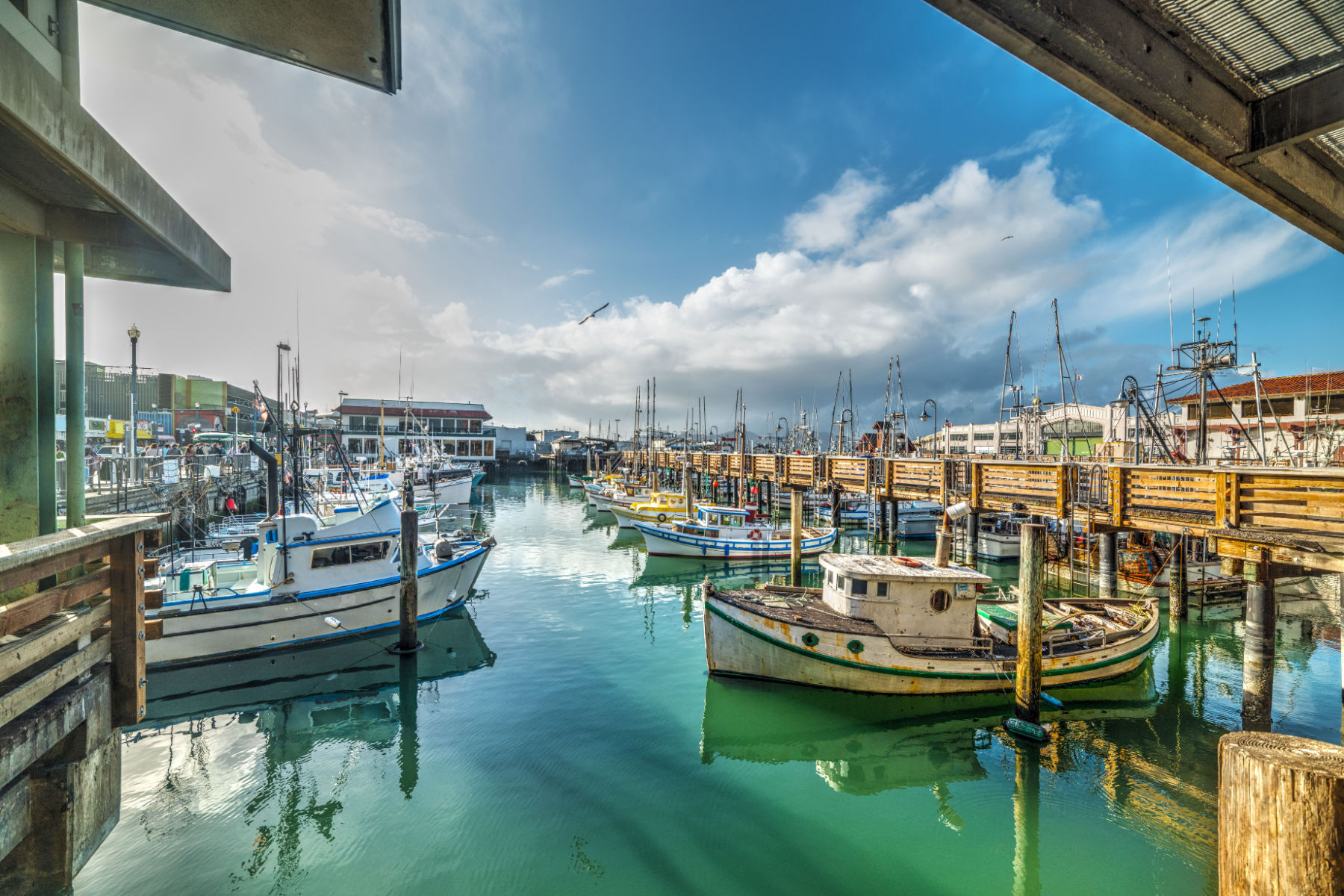
12. Lake Tahoe
Our next California landmark is the largest freshwater lake in the Sierra Nevada and the largest alpine lake in North America. At 122,160,280 acre feet, only the five Great Lakes are larger by volume. It’s deepest point is 1,645 feet, making it the second-deepest in the United States after Crater Lake in Oregon.
At #12 on our list of the Best California Landmarks is Lake Tahoe.
Lake Tahoe is a large freshwater lake located in the Sierra Nevada mountains, on the border of California and Nevada in the western United States.
The lake is renowned for its crystal-clear, blue waters, which are surrounded by snow-capped mountains and lush forests. It is a popular year-round tourist destination, attracting visitors for outdoor recreation, scenic beauty, and the many small towns and resorts that dot its shores.

Emerald Bay, Lake Tahoe | Courtesy of Wikimedia Commons
Visitors Can Enjoy Many Activities During The Summer Months
In the summer months, visitors can enjoy activities such as swimming, boating, water skiing, fishing, and hiking. The lake is surrounded by numerous hiking trails, including the Tahoe Rim Trail, which offers panoramic views of the lake and surrounding mountains.
In the winter, Lake Tahoe is a popular destination for skiing and snowboarding, with several ski resorts located in the area, including: Squaw Valley, Heavenly Mountain Resort, and Northstar California.
The lake is also known for its vibrant nightlife, with numerous restaurants, bars, and nightclubs located in the nearby towns of South Lake Tahoe and Incline Village. In addition, there are several casinos located on the Nevada side of the lake, which offer a range of gaming and entertainment options.

11. The Getty Museum
Our next California landmark is dedicated to the study of the arts and cultures of ancient Greece, Rome, and Etruria. At #11 on our list of the Best California Landmarks is The Getty Museum.
The Getty Museum houses an extensive collection of European paintings, drawings, sculptures, and decorative arts from the Middle Ages to the present day.
The museum was founded by the American oil tycoon J. Paul Getty, who was one of the richest men in the world in the mid-20th century.
J. Paul Getty first began collecting art in the 1930s, and by the 1950s he had amassed a large and impressive collection of European art. In 1953, he established the J. Paul Getty Trust, a philanthropic organization that supports arts, education, and cultural heritage.
The trust is still in operation today, and it funds the Getty Museum as well as other cultural and educational programs.

The Museum Was Built On A Hilltop Offering Sweeping Views
The Getty Museum itself was established in 1974, and the original building was designed by the architect Richard Meier. The museum was built on a hilltop in the Brentwood neighborhood of Los Angeles, offering sweeping views of the city and the Pacific Ocean.
Over the years, the museum has expanded its collection and facilities, with additional buildings designed by architects such as Robert Irwin and Renzo Piano. The museum’s collection now includes more than 44,000 objects, and it is one of the most visited art museums in the United States.
The Getty Museum has also been involved in numerous controversies over the years, including disputes over the ownership of some of its works of art. In particular, the museum has faced criticism for its acquisition of ancient artifacts, including a statue of Aphrodite that was later returned to Italy after it was found to have been looted.
Despite these controversies, the Getty Museum remains a popular and influential cultural institution, and its collection of European art is widely regarded as one of the finest in the world.
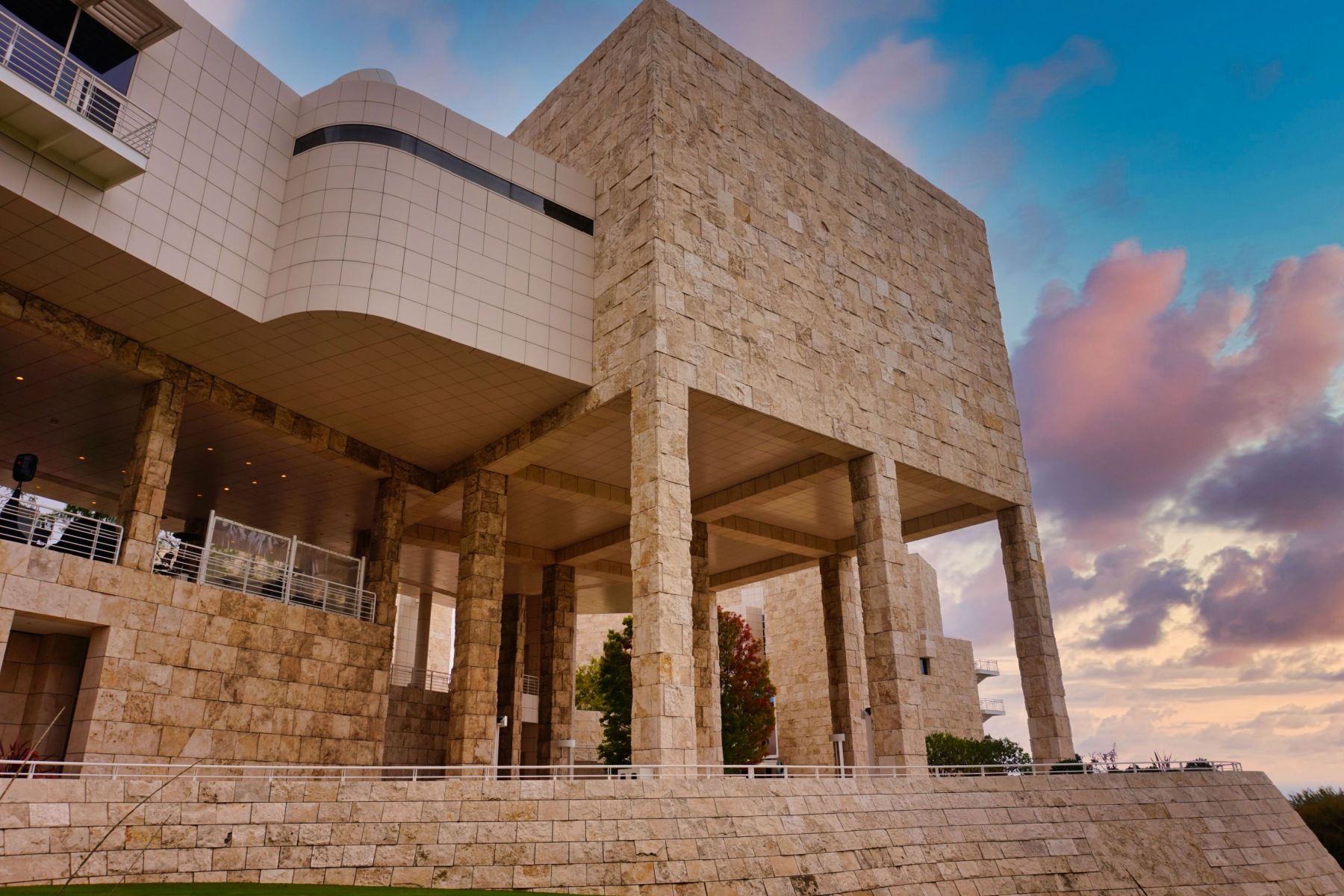
Things To Do At The Getty
Here are some of the things you can do at the museum:
- Admire the art: The museum houses an impressive collection of European paintings, drawings, sculptures, and decorative arts from the Middle Ages to the present day. Visitors can view works by artists such as Rembrandt, Van Gogh, Monet, and Renoir, as well as ancient Greek and Roman artifacts.
- Explore the gardens: The Getty Museum’s central garden is a beautiful and peaceful oasis featuring fountains, reflecting pools, and sculptures by artists such as Robert Irwin and Barry Flanagan. The garden also offers stunning views of the surrounding hills and the Pacific Ocean.
- Attend a concert or event: The museum regularly hosts concerts, lectures, and other cultural events that are open to the public. Check the museum’s website for upcoming events and ticket information.
- Take a guided tour: The museum offers a range of guided tours that can help visitors learn more about the art and architecture of the museum. Tours are available for both individuals and groups, and they can be customized to fit your interests.
- Visit the Getty Villa: The Getty Villa is a separate museum located in Pacific Palisades that houses the museum’s collection of ancient Greek, Roman, and Etruscan art and artifacts. Visitors can explore the museum’s galleries, gardens, and outdoor theater.
- Enjoy the views: The Getty Museum is located on a hilltop in the Brentwood neighborhood of Los Angeles, offering panoramic views of the city and the Pacific Ocean. Take some time to enjoy the stunning views from the museum’s terraces and outdoor spaces.

The Getty Museum in Los Angeles | Courtesy of Wikimedia Commons
Top 10 California Landmarks
10. Alcatraz
We’re on to the Top 10 California Landmarks. At #10 is a place which was once a fort, a military prison, and a maximum security federal penitentiary.
Welcome to Alcatraz.
Located on a lonely island in the middle of San Francisco Bay, Alcatraz—aka “The Rock”—had held captives since the Civil War. But it was in 1934, the high point of a major war on crime, that Alcatraz was re-fortified into the world’s most secure prison.
As the National Park Service notes, “Alcatraz reveals stories of American incarceration, justice, and our common humanity. This small island was once a fort, a military prison, and a maximum security federal penitentiary.”

While You’re There Check Out the Big Lockup, Alcatraz
The Big Lockup: Mass Incarceration in the United States, is an exciting new exhibit which examines Alcatraz Island as a military prison and federal penitentiary within the context of incarceration in the U.S. where currently 2.3 million people are behind bars, more than any other country in the world.
The exhibit takes a look at the disproportionate number of people of color, low literacy and those born into poverty that are in jail and prison.
It looks at who is harmed, who bears the costs and how we can deter and prevent people from being put back into the system. Finally, The Big Lockup asks: Is there a better way? (Source: NPS)

9. Hollywood Sign
Our next California landmark is more than just nine white letters spelling out a city’s name; it’s one of the world’s most evocative symbols – a universal metaphor for ambition, success, glamour, and that magical place where dreams come true.
At #9 on our list of the Best California Landmarks is the iconic Hollywood Sign.
The Hollywood Sign is an iconic symbol of the entertainment industry and the city of Los Angeles. It originally started as a marketing ploy for a real estate development in the Hollywood Hills area.

It Was Called “Hollywoodland”
In 1923, a real estate developer named Harry Chandler and his partner Moses H. Sherman purchased 480 acres of land in the Hollywood Hills with the intention of building a luxurious residential community called “Hollywoodland.” As part of their marketing strategy, they decided to erect a giant sign that would be visible from all over the city and attract potential buyers to the development.
The sign was originally made of wood and spelled out “Hollywoodland” in 50-foot-tall letters, with 30-foot gaps between each letter. It was illuminated by 4,000 light bulbs and quickly became a landmark in the city.
In 1949, the Hollywood Chamber of Commerce took over ownership of the sign and removed the last four letters “land,” leaving only “Hollywood.” The sign was also replaced with steel letters, which were more durable than the original wood structure.
Over the years, the Hollywood Sign has been the subject of numerous controversies and preservation efforts. In the 1970s, the sign fell into disrepair and was in danger of being demolished. However, a group of Hollywood celebrities, led by Hugh Hefner, rallied to save the sign and raised the funds needed to restore it.
Today, the Hollywood Sign is one of the most recognizable landmarks in the world and a popular tourist attraction in Los Angeles. It has also been featured in countless movies, TV shows, and other media, cementing its place in pop culture history.
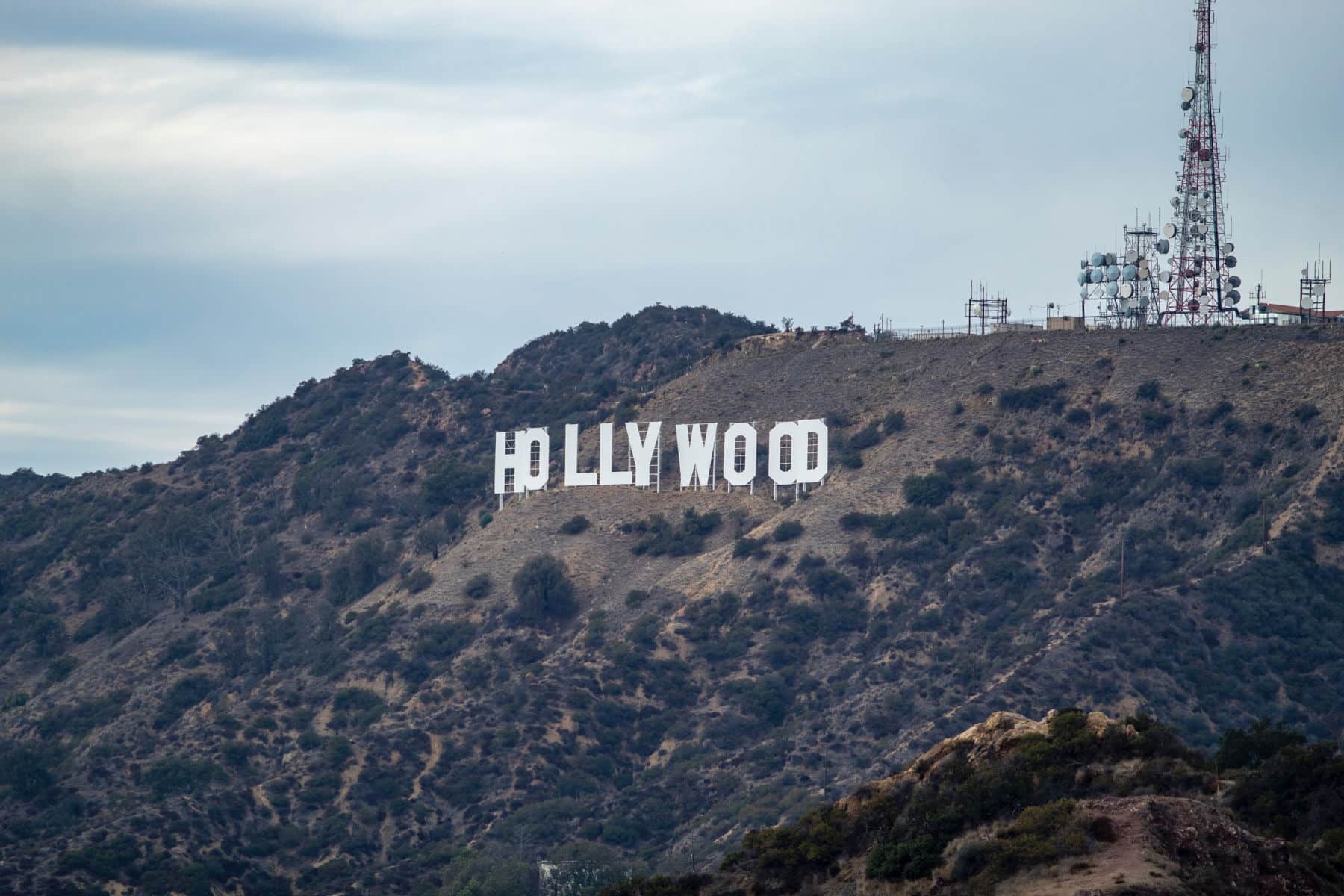
8. John Muir National Historic Site
Next up, we embrace a familiar name for anyone who knows anything about conservation. At #8 on our list of the Best California Landmarks is the John Muir National Historic Site. And, if you want to learn the story of one of America’s greatest conservationists, this is the place to go.
It’s a preserved 19th-century home located in Martinez, California, that honors the life and legacy of naturalist and conservationist John Muir. Muir, who is considered to be the “father of the National Parks,” lived in this home from 1890 until his death in 1914.
John Muir
Muir is considered one of the most important figures in the conservation movement in the United States. He was instrumental in the establishment of several national parks, including: Yosemite, Sequoia, Mount Rainier, and Petrified Forest. He was also a co-founder of the Sierra Club, an environmental organization that continues to be active today.
Muir’s advocacy for the preservation of wilderness areas was based on his belief in the inherent value of nature and his conviction that human beings should respect and protect the natural world.
He was a prolific writer and his books, including “The Mountains of California” and “My First Summer in the Sierra,” helped to raise awareness of the beauty and importance of the natural world.
Muir’s legacy is still felt today, and his ideas and writings continue to inspire people to appreciate and protect the environment. His work helped to establish the concept of national parks and wilderness areas in the United States and has had a lasting impact on the conservation movement worldwide.
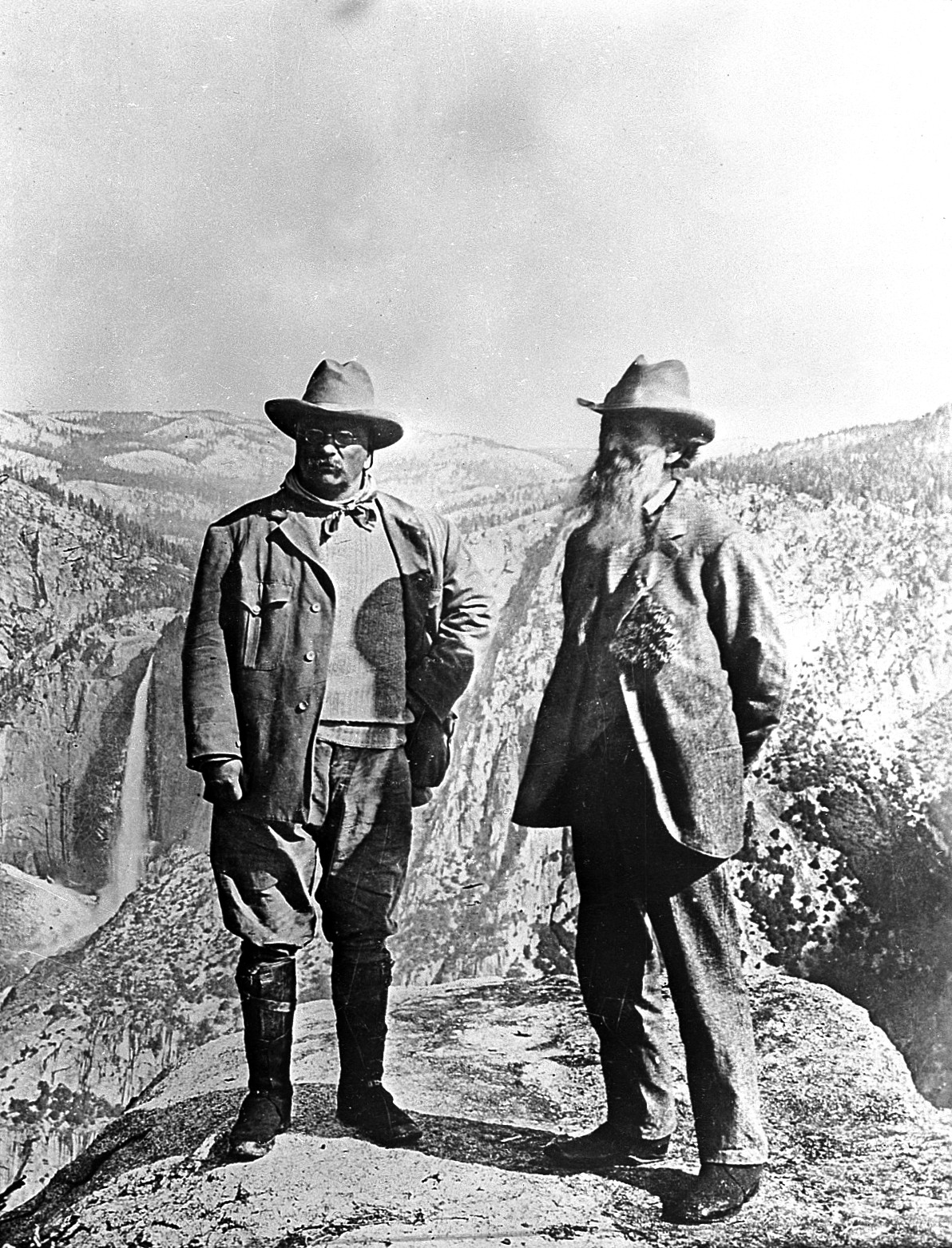
The Historic Site
The site features several historic structures, including the main house, a carriage house, and a barn, all of which are furnished to reflect the Muir family’s way of life during the late 1800s and early 1900s.
Visitors can take guided tours of the home, learn about Muir’s life and work through exhibits and multimedia displays, and explore the surrounding 14-acre property, which includes a fruit orchard and a historic windmill.
John Muir National Historic Site is a unique and important destination for anyone interested in the history of conservation and the American environmental movement.

Things To See & Do
Some of the things to see and do at the John Muir National Historic Site include:
- House and Ranch tour: Visitors can take a tour of John Muir’s Victorian home, which was built in 1882, and learn about his life, work and the history of the property.
- Hiking trails: Visitors can hike on the many trails that wind through the surrounding hills, including the John Muir Nature Trail and the Mount Wanda Trail.
- Gardens: Visitors can stroll through the beautiful gardens surrounding the house, which were designed and planted by Muir and his wife.
- Visitor Center: Visitors can learn more about John Muir and his legacy at the visitor center, where they can also see artifacts and photographs related to his life.
- Ranger-led programs: Visitors can participate in ranger-led tours and programs, including guided hikes, campfire talks, and bird watching.
- Special events: The site offers special events throughout the year, such as guided hikes, campfire talks, and bird watching.
- Accessibility: The site offers an accessible trail and restrooms for visitors with disabilities.
- Group tours: The site offers group tours for schools, youth groups and other organizations.
- Photography: Visitors can take photographs of the beautiful gardens, the Victorian home, and the surrounding hills.
- Gift shop: Visitors can purchase souvenirs and memorabilia in the gift shop.
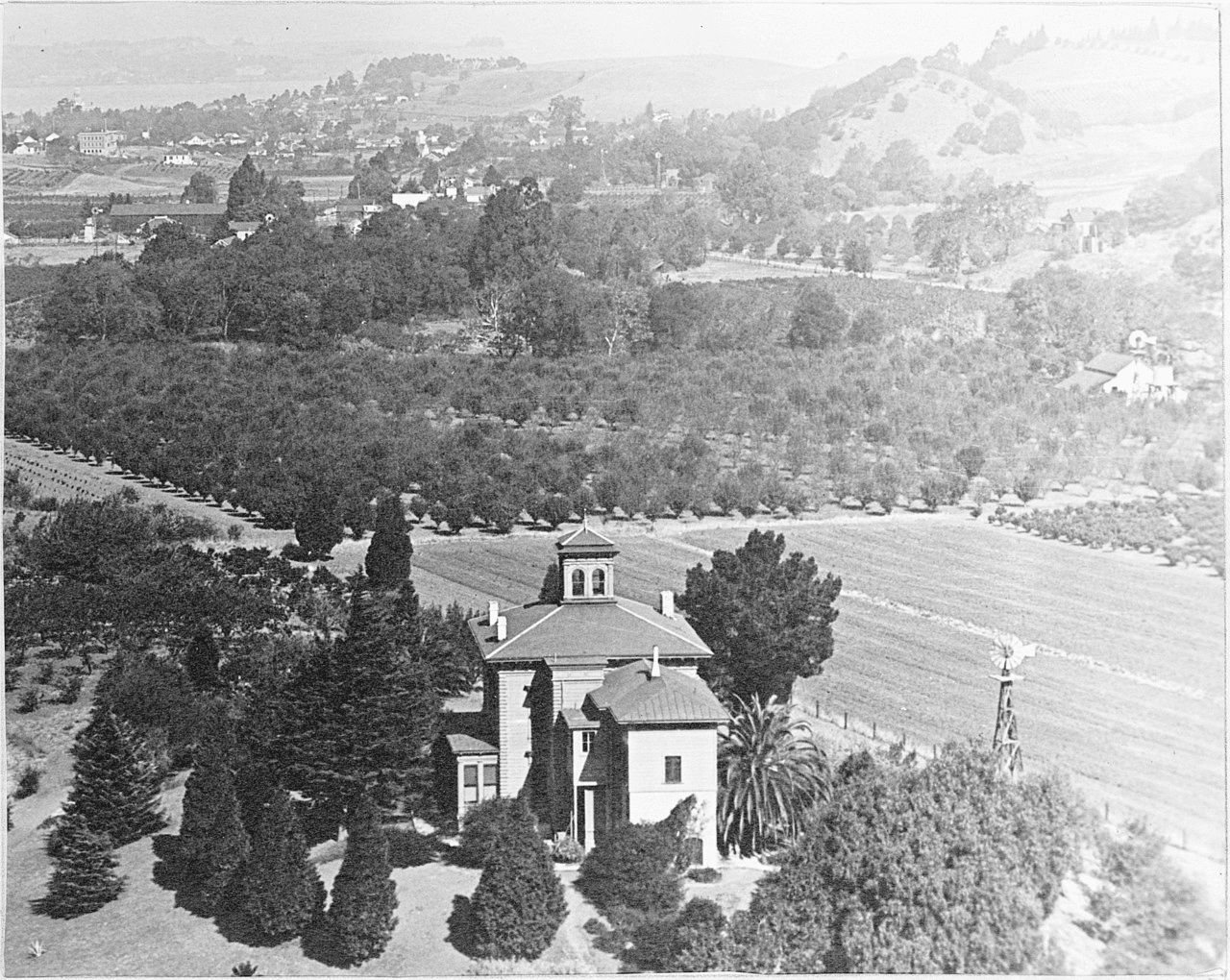
7. Redwood National Park
Our next California landmark is home to the world’s tallest trees. It’s a World Heritage Site and International Biosphere Reserve that protects nearly half of the world’s old growth redwoods, including champion specimens more than 370 feet (113 meters) in height—or five stories taller than the Statue of Liberty.
At #7 on our list of the Best California Landmarks is Redwood National Park.
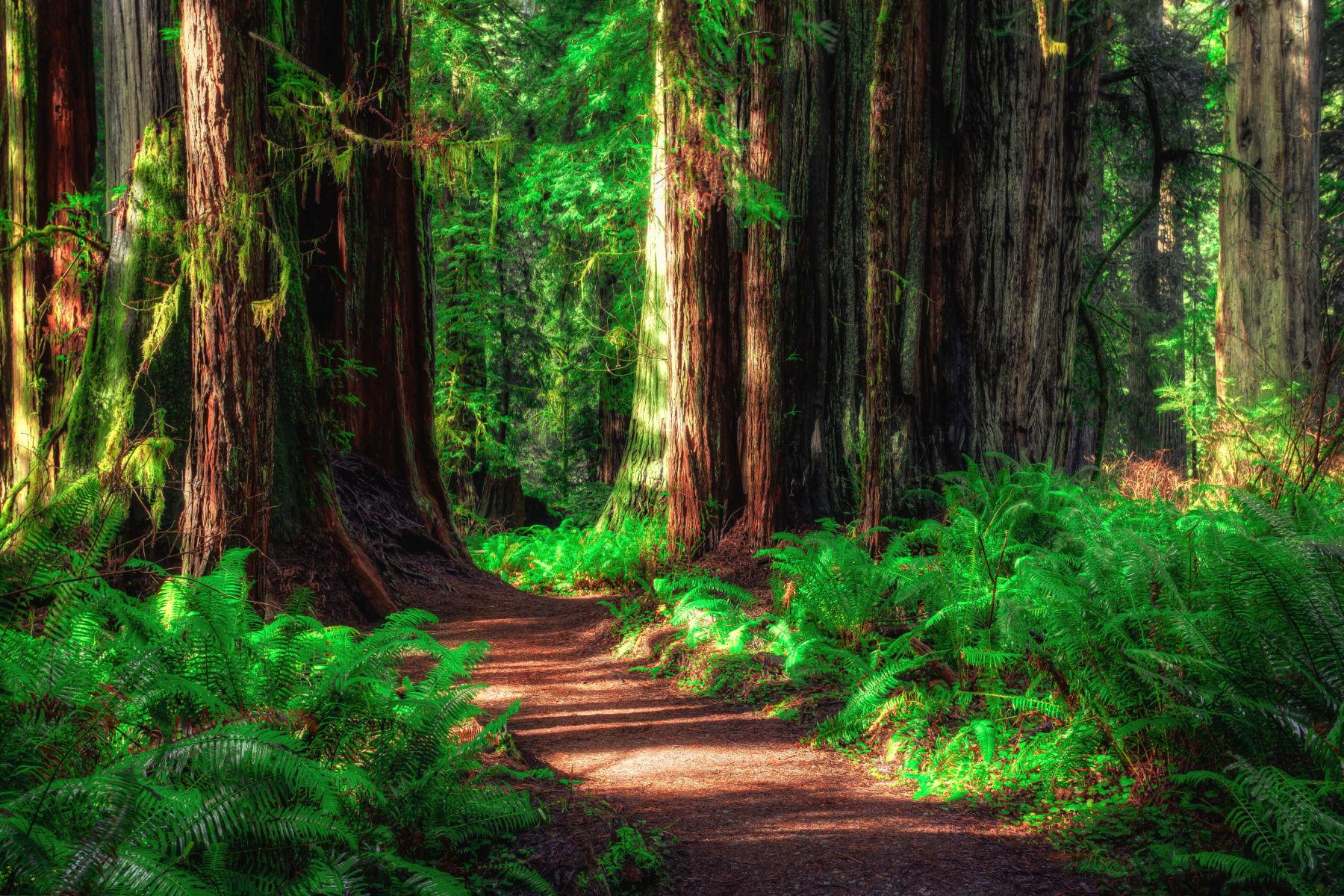
Redwood National Park’s misty forests, wild coastline, pristine streams, and valleys teeming with wildlife are one of the best kept “secrets” in the national park system. 40 scenic miles of wild and rugged coastline where whales swim and elk roam are enough to take your breath away.
Waterfalls and clear blue streams rush against a backdrop of vivid green ferns. The tallest trees in the world soar to unimaginable heights all around you and command your awed gaze. Yes, here in Redwood National Park you’ll be forgiven if you start to think you’re another planet, like say Endor.

Things To Do In Redwood National Park
Redwood National Park is a breathtaking destination that boasts stunning redwood forests, pristine beaches, and abundant wildlife. Here are some things to do in Redwood National Park:
- Hike through the old-growth redwood forests: Take a hike through the ancient redwood trees and experience the awe-inspiring beauty of the park. Some popular trails include the Lady Bird Johnson Grove Trail, the Tall Trees Trail, and the Coastal Trail.
- Visit the beaches: Redwood National Park also has several stunning beaches, including Klamath Beach, Gold Bluffs Beach, and Enderts Beach. Spend a day relaxing on the sand, exploring tide pools, or taking a dip in the ocean.
- Go wildlife spotting: The park is home to a variety of wildlife, including elk, black bears, mountain lions, and bald eagles. Take a guided tour or hike with a ranger to learn more about the animals that call the park home.
- Take a scenic drive: The Newton B. Drury Scenic Parkway and the Howland Hill Road both offer stunning views of the park’s redwood forests.
- Attend a ranger-led program: The park offers a variety of ranger-led programs, including guided hikes, campfire talks, and stargazing programs.
- Go fishing: The park has several streams and rivers that are popular fishing spots, including the Klamath River, Redwood Creek, and Prairie Creek.
- Visit the park’s cultural sites: The park is also home to several historic sites, including the Kuchel Visitor Center, the Battery Point Lighthouse, and the Yurok Village.
- Go camping: Redwood National Park has several campgrounds, including Jedediah Smith Campground, Elk Prairie Campground, and Gold Bluffs Beach Campground. Spend a night or two under the stars and experience the park’s natural beauty up close.

Watch Our Redwood Film
MTJP | Redwood is the culmination of several weeks spent exploring Redwood National and State Parks. Redwood National and State Parks in Northern California are home to the tallest trees in the world, the mighty Redwood, which can reach staggering heights of over 360ft and weigh more than 500 tons.
These parks feature magical forests, miles of spectacular beaches, stunning overlooks, and the largest herd of Roosevelt elk on the planet. This film was shot entirely in 4K.
6. TCL Chinese Theater
Our next California landmark is the world’s largest IMAX auditorium, as well as the only movie palace in California with a state-of-the-art IMAX Laser projection experience. Watching a movie here is not just a night out, it’s a memorable event.
At #6 on our list of the Best California Landmarks is TCL Chinese Theater.
The TCL Chinese Theater is a world-famous cinema located on Hollywood Boulevard in Los Angeles, California. It was originally named Grauman’s Chinese Theater and was opened in 1927.
The theater was designed by the renowned architect Raymond Kennedy and built by Sid Grauman, who was also responsible for the construction of the nearby Egyptian Theater.

It’s Opening Was A Star-Studded Affair
The Chinese Theater’s opening night was a star-studded affair, with Hollywood’s biggest names in attendance, including: Mary Pickford, Douglas Fairbanks, and Norma Talmadge. The theater quickly became a popular destination for moviegoers, and it remains an iconic landmark of Hollywood to this day.
One of the most distinctive features of the TCL Chinese Theater is its forecourt, which is paved with concrete slabs that bear the hand and footprints of Hollywood’s biggest stars.
The tradition began in 1927 when actress Norma Talmadge accidentally stepped in wet cement in front of the theater, and Sid Grauman saw an opportunity to create a unique attraction.
Since then, the forecourt has been imprinted with the hand and footprints of hundreds of celebrities, including: Marilyn Monroe, John Wayne, and Tom Hanks.

The Theater Has Undergone Renovations & Changes
Over the years, the theater has undergone several renovations and changes in ownership. In 1973, the theater was declared a historic landmark and was added to the National Register of Historic Places.
In 2001, the theater underwent a major renovation and was rebranded as the TCL Chinese Theater, following a sponsorship deal with the Chinese electronics manufacturer TCL Corporation.
Today, the TCL Chinese Theater is a popular destination for tourists and movie fans alike, who flock to see the hand and footprints of their favorite celebrities and catch a movie in one of the theater’s historic auditoriums.
It remains an important symbol of Hollywood’s rich history and enduring legacy.
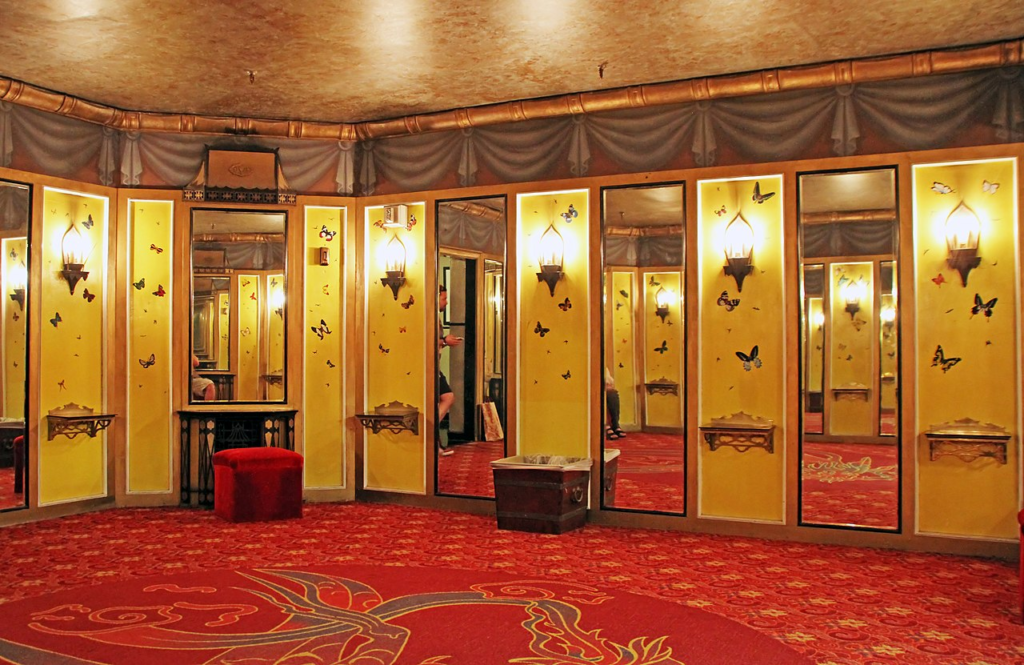
Inside Grauman’s Chinese Theater 2 | Courtesy of Wikimedia Commons
Top 5 California Landmarks
5. Yosemite National Park
We’re on to the Top 5 California Landmarks. Our next landmark is best known for its waterfalls, towering granite monoliths, deep valleys and ancient giant sequoias. On October 1, 1890, it became a national park, and more than 125 years later, it’s still wowing visitors.
At #5 on our list of the Best California Landmarks is Yosemite National Park.
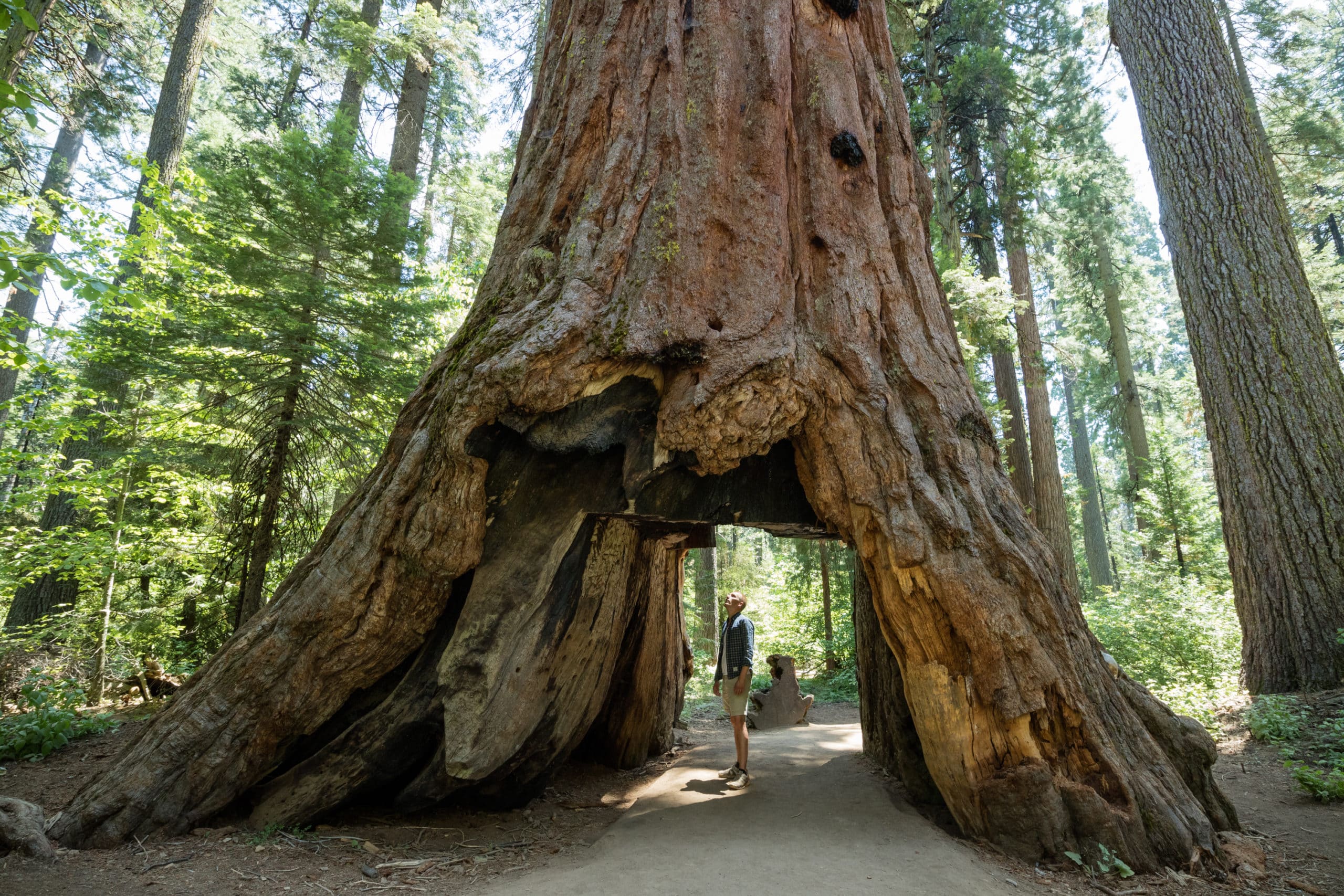
Yosemite is a protected wilderness area in California’s Sierra Nevada mountains, known for its stunning natural beauty and unique geological features. The park covers over 1,200 square miles and includes several distinct landscapes.
America’s third national park is located in California’s Sierra Nevada mountains. It’s famed for its giant, ancient sequoia trees, and for Tunnel View, the iconic vista of towering Bridalveil Fall and the granite cliffs of El Capitan and Half Dome.
Visitors to Yosemite can enjoy a range of activities, including hiking, rock climbing, camping, horseback riding, and scenic drives. The park also offers several lodges, campgrounds, and concessions for visitors.
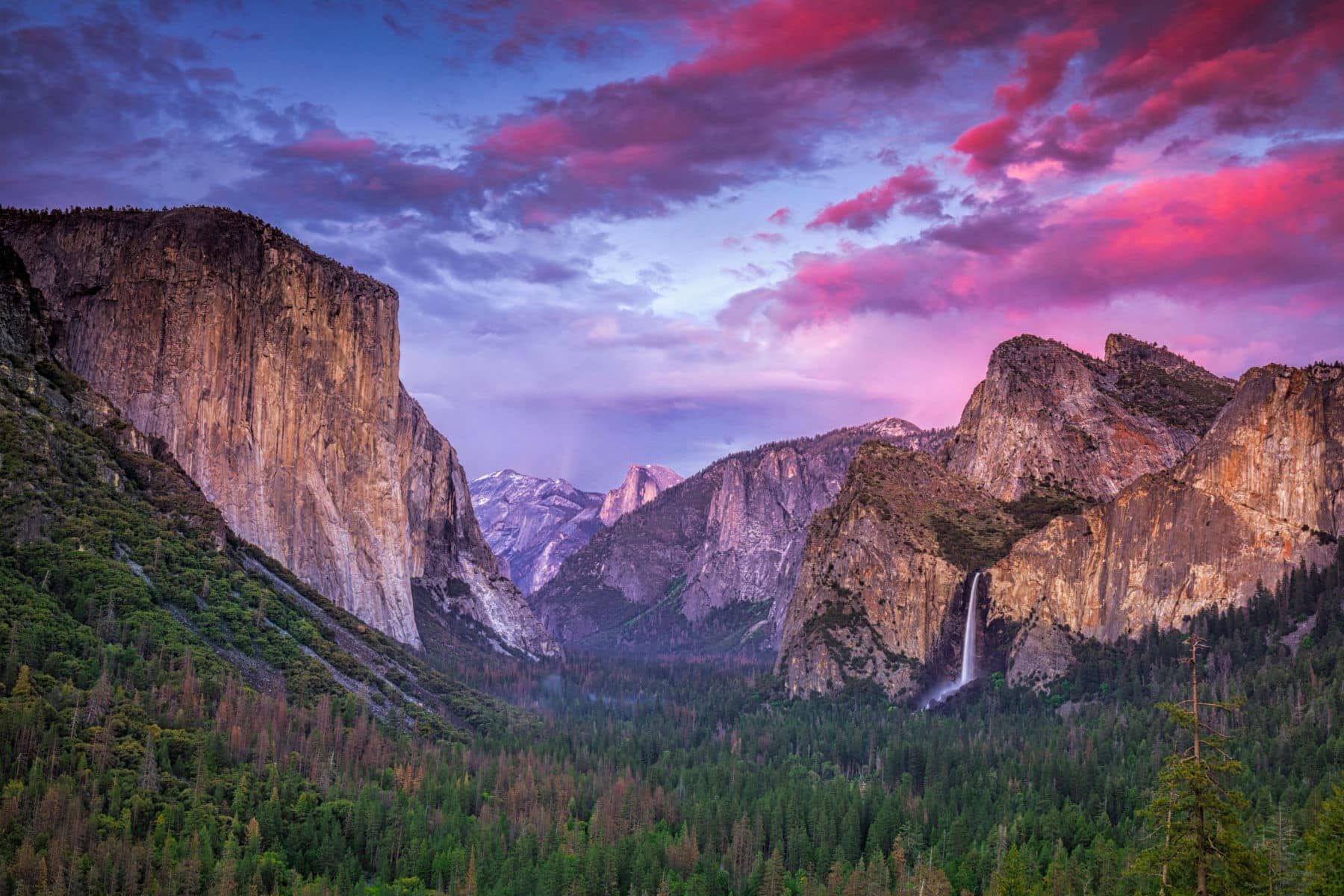
Things To See & Do While At Yosemite
Some of the things to see and do at Yosemite National Park include:
- Hiking: Yosemite offers over 800 miles of hiking trails, including the famous Mist Trail to Vernal and Nevada Falls, and Half Dome.
- Scenic drives: Visitors can take a scenic drive along Tioga Road or Glacier Point Road to take in the park’s stunning vistas.
- Camping: Visitors can camp in the park’s 13 campgrounds, with advance reservations required for most of them during peak season.
- Rock Climbing: Yosemite is renowned for its rock climbing opportunities, with routes for all skill levels, including El Capitan, the largest granite monolith in the world.
- Wildlife viewing: Visitors can see a wide variety of wildlife in the park, including black bears, mule deer, and peregrine falcons.
- Rafting and swimming: Visitors can raft and swim in the Merced River, which runs through the park.
- Skiing and snowshoeing: Visitors can enjoy winter sports such as skiing and snowshoeing in the park’s high country during the winter months.
- Visitor centers: Yosemite offers several visitor centers with information and educational exhibits about the park’s history, geology, and ecology.
- Ranger-led programs: Visitors can participate in ranger-led programs including guided hikes, campfire talks and wildlife watching.
- Photography: Yosemite is a popular destination for photographers, with its beautiful landscapes and natural features, especially the granite cliffs, the waterfalls and the giant sequoias.

4. Joshua Tree National Park
We’re More Than Just Parks so don’t be surprised if our Top 5 is heavy with national parks. To us, they’re the grandest places on the planet.
At #4 on our list of the Best California Landmarks is a place where views are breathtaking, the wildlife is diverse, and the endangered nature of the Joshua trees means this destination is a must-visit for a variety of travelers. Welcome to Joshua Tree National Park.
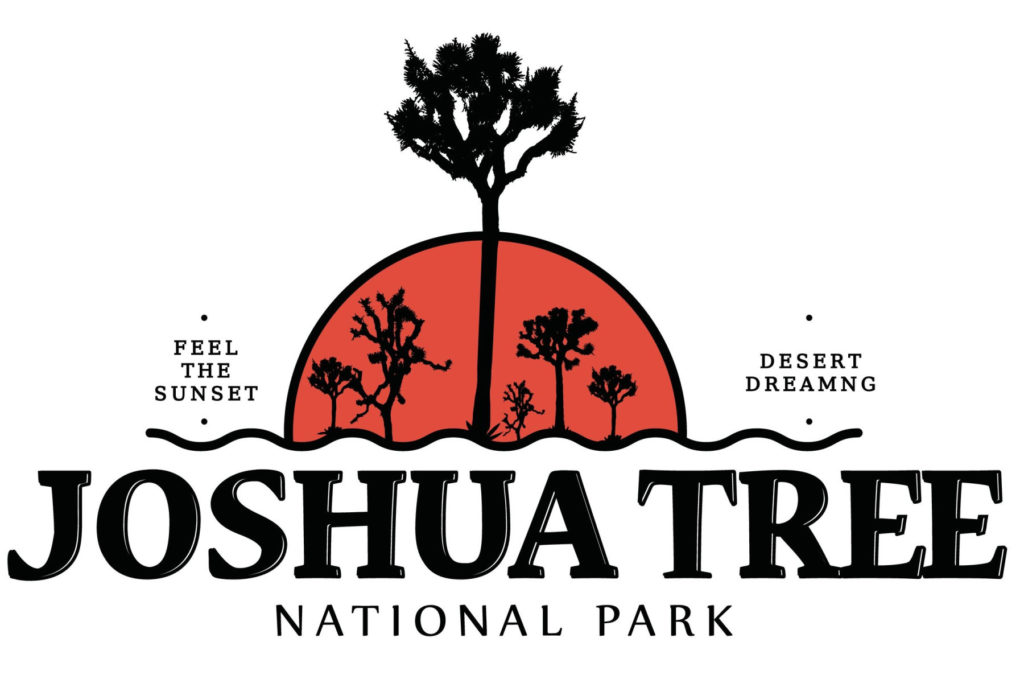
Joshua Tree National Park covers an area of over 790,000 acres and is named after the unique Joshua trees that are found throughout the park.
The park is situated at the junction of two distinct desert ecosystems, the Mojave and the Colorado, which makes for a unique landscape. Visitors can explore the park’s rocky peaks, rugged canyons, and arid landscapes, which are home to a wide range of plants and animals.
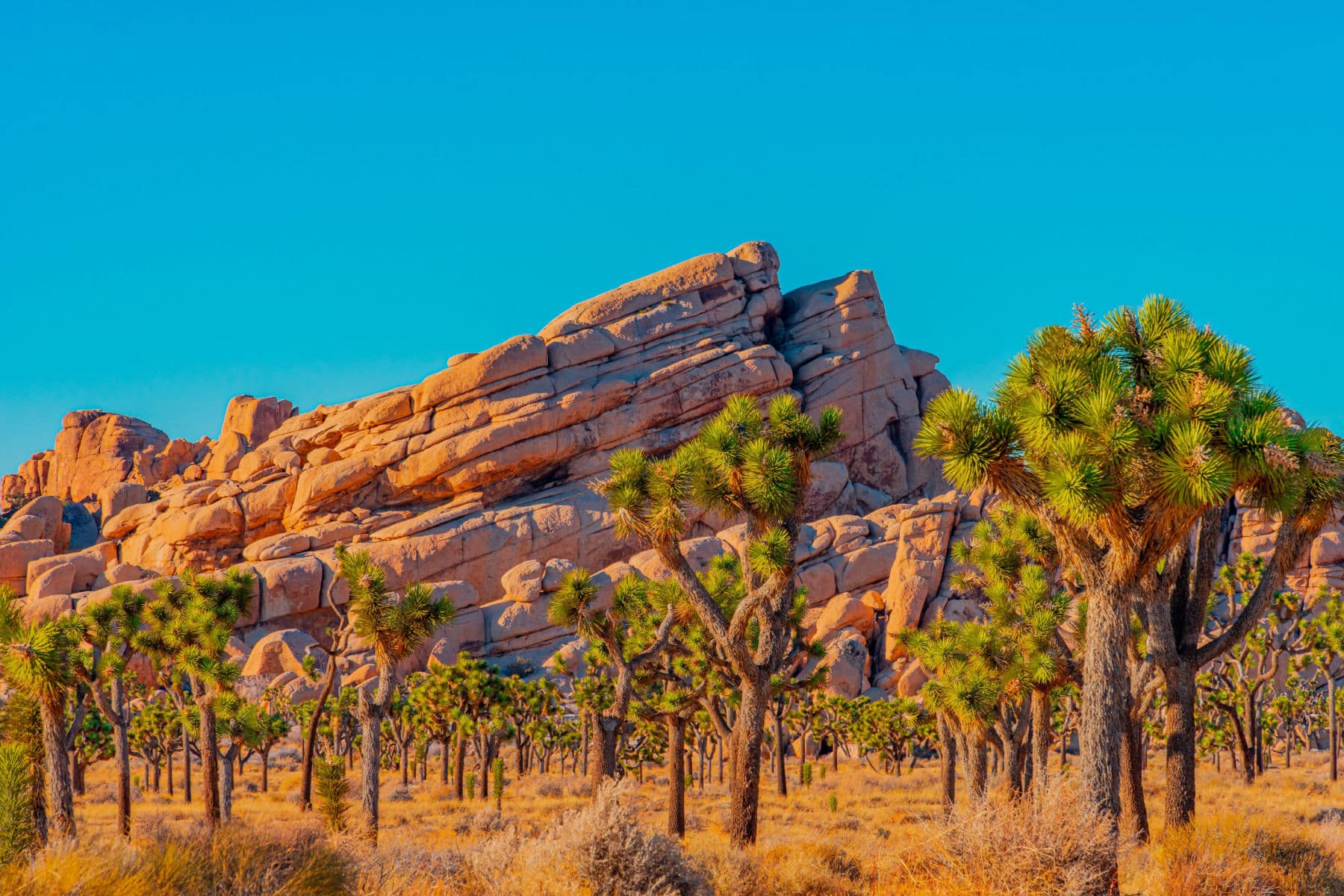
The park is also popular with rock climbers, as it contains a large number of unique and challenging rock formations. In addition, Joshua Tree National Park is known for its clear night skies, making it a popular destination for stargazing.
The park is open year-round and offers a variety of recreational opportunities, including hiking, camping, and wildlife viewing. It is a popular destination for both locals and tourists and is considered to be one of the most unique and picturesque national parks in the United States.
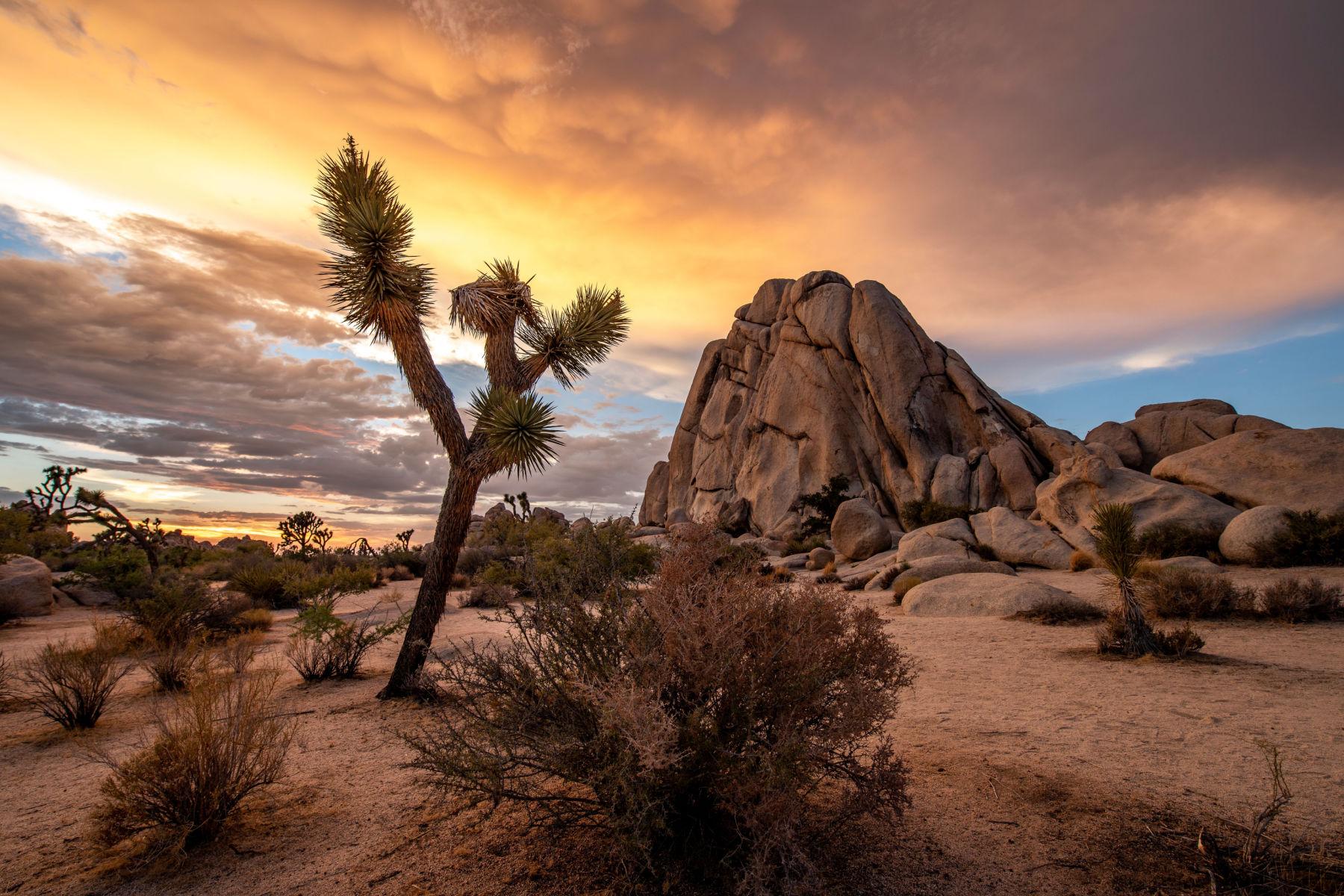
The History Of Joshua Tree
The history of Joshua Tree National Park dates back to the early 20th century and reflects the region’s human and environmental history.
- Early Human Use: The land that is now Joshua Tree National Park has a rich cultural history, with evidence of Native American habitation and use of the area dating back thousands of years. In the late 19th and early 20th centuries, the region saw increasing settlement and resource extraction, including mining, grazing, and homesteading.
- Establishment as a National Monument: In 1936, President Franklin D. Roosevelt designated the area as Joshua Tree National Monument, protecting its unique and important natural features.
- Expansion and Re-designation: In 1994, Joshua Tree National Monument was re-designated as Joshua Tree National Park, expanding its protected lands and incorporating additional lands managed by the Bureau of Land Management.
- Conservation and Management: Today, Joshua Tree National Park covers over 790,000 acres and is recognized as a critical component of California’s protected wilderness areas. The park offers visitors the chance to explore its diverse landscape through hiking, camping, rock climbing, and other recreational activities.
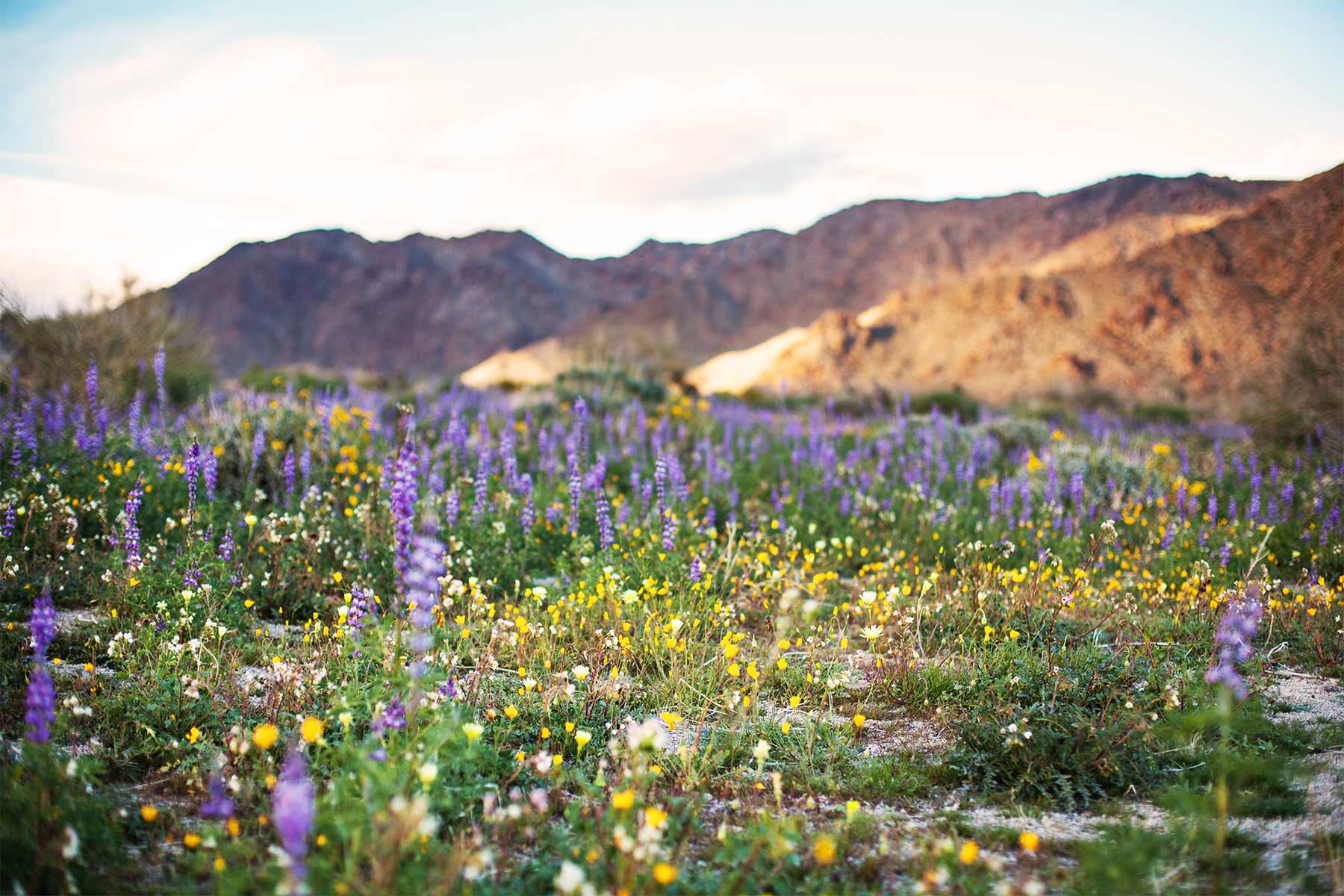
Check Out Our Joshua Tree Film
MTJP | Joshua Tree is the culmination of nearly a month spent exploring Joshua Tree National Park. We chose Joshua Tree because of its unique landscape. Its immense boulder piles, colorful cactus fields, endless desert expanses, and one-of-a-kind Joshua trees make for a spectacular setting.
This film was shot entirely in 4K. We decided to capture this film during the winter months to spare ourselves from the extreme temperatures of Summer. Joshua Tree is home to some of the darkest skies in the United States and as such we chose to feature the stars heavily.
Filming locations include: Skull Rock, Arch Rock, Keys View, Wall Street Mill, Cholla Cactus Garden, Jumbo Rocks, Cottonwood Springs, & more.
3. Disneyland
At #3 on our list of the Best California Landmarks is the “Happiest Place On Earth.” Welcome to Disneyland.
Disneyland is a world-famous theme park located in Anaheim, California, which opened its gates to the public on July 17, 1955. It was created by Walt Disney, who had a vision of a park where families could go to have fun together, and which would bring his beloved characters and stories to life.
Walt Disney’s inspiration for Disneyland came from his experiences with amusement parks in the 1930s, where he noticed that they were often dirty, chaotic, and not family-friendly. He envisioned a park where visitors could experience various attractions and entertainments, all within a clean and controlled environment.
To create Disneyland, Disney assembled a team of designers, artists, and engineers who worked together to develop innovative technologies and creative designs. The park was divided into different “lands”, each with its own theme and attractions, such as Main Street USA, Adventureland, Fantasyland, Tomorrowland, and Frontierland.

A Highly Anticipated Event
Disneyland’s opening day was highly anticipated, with thousands of people lining up outside the park gates to be among the first to experience the magic. However, the opening day was plagued with problems, including overcrowding, traffic jams, and malfunctioning attractions.
Despite the initial setbacks, Disneyland quickly became a massive success, drawing millions of visitors each year from around the world. Over the years, new attractions and lands were added to the park, including the iconic “It’s a Small World” ride and the “Pirates of the Caribbean” attraction.
Disneyland has also inspired numerous other theme parks and entertainment venues around the world, and has become an important cultural touchstone, representing not only a place of fun and fantasy, but also a symbol of innovation, creativity, and imagination.
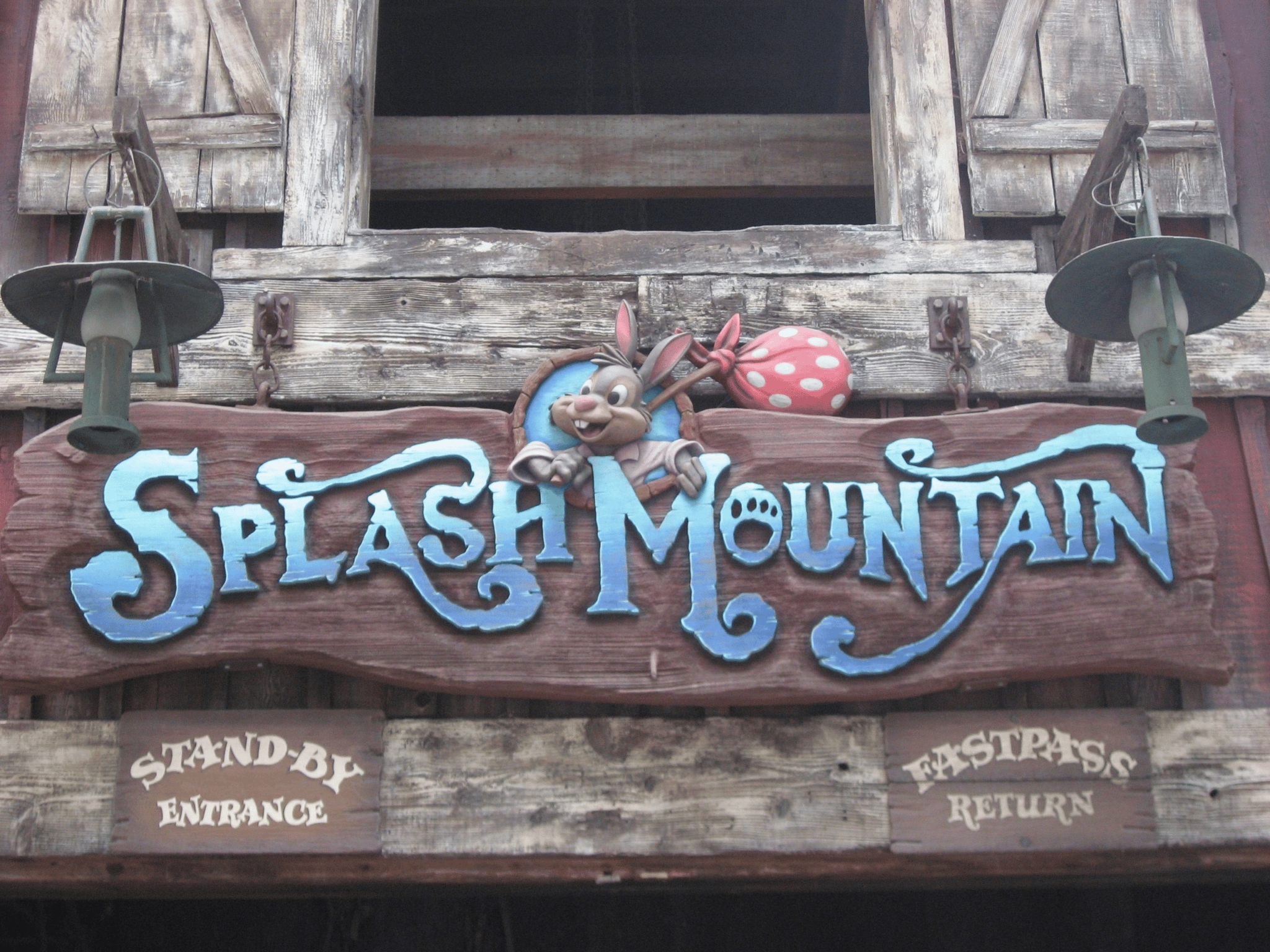
Things To See & Do
Some of the things to see and do at Disneyland include:
- Attractions: Disneyland offers a wide variety of attractions, including classic rides such as the “Pirates of the Caribbean,” “It’s a Small World,” and “Space Mountain.”
- Shows and parades: Disneyland offers a variety of live shows and parades, including the “Fantasy in the Sky” fireworks show and the “Paint the Night” parade.
- Character meet-and-greets: Visitors can meet and take pictures with their favorite Disney characters throughout the park.
- Dining: Disneyland offers a wide variety of dining options, including sit-down restaurants, quick-service locations, and snack stands.
- Shopping: Disneyland offers a wide variety of shops, including souvenir shops, apparel shops, and specialty stores.
- Entertainment: Disneyland offers a variety of entertainment options, including live music and street performers.
- Seasonal events: Disneyland offers seasonal events throughout the year, including Halloween Time, Christmas Time and more.
- Accommodation: The Disneyland resort offers several hotels, including Disney’s Grand Californian Hotel & Spa, Disney’s Paradise Pier Hotel and Disney’s Hotel Disneyland.
- Disney California Adventure Park: Disneyland resort also offers an second theme park called Disney California Adventure Park, which features attractions, shows, and parades based on popular Disney and Pixar films and stories.
- Special events: Disneyland offers special events throughout the year, such as the famous “Disneyland After Dark” event.

2. Death Valley National Park
We’re on to the final 2 California landmarks. In the runner-up spot at #2 is Death Valley National Park.
Historic Death Valley National Park is a national park located in the states of California and Nevada. It covers an area of 3,373,000 acres and is known for its extreme desert climate, stunning views, and unique geological formations.
The park is home to a number of unique geological features, including the Badwater Basin, which is the lowest point in North America at 282 feet below sea level, and the Devil’s Golf Course, which is a field of jagged salt crystals that rise up from the ground. The park is also home to a variety of plant and animal life, including Joshua trees, desert tortoises, and bighorn sheep.
In addition to its natural beauty, Death Valley National Park offers a range of recreational activities, including hiking, rock climbing, and photography. The park also offers guided tours and ranger-led programs, which provide visitors with the opportunity to learn more about the park’s natural and cultural history.
Death Valley National Park is a popular destination for visitors, with millions of people visiting each year to enjoy its natural beauty and recreational opportunities.
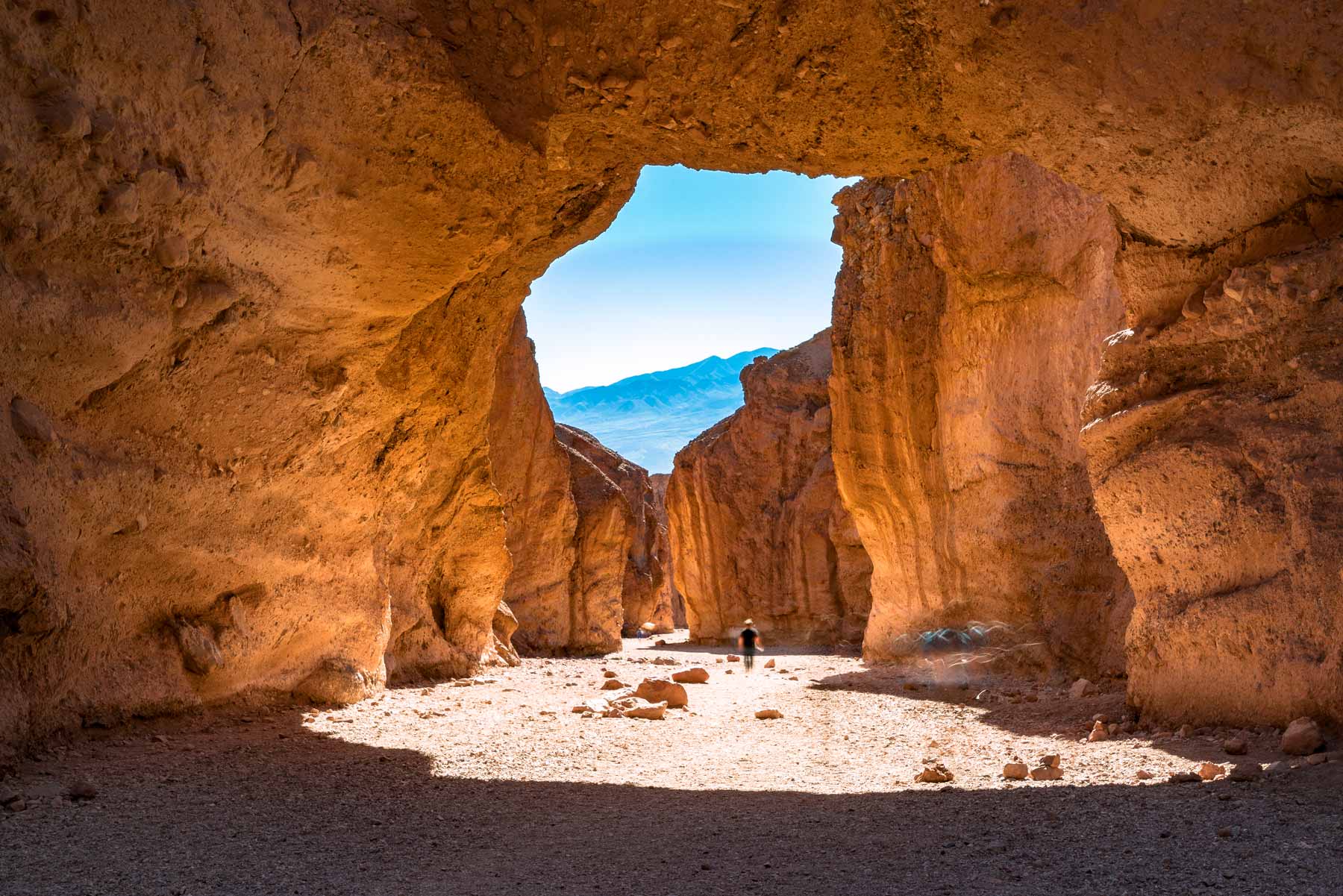
The History Of Death Valley National Park
The history of Death Valley National Park reflects the region’s human and environmental history.
- Early Human Use: The land that is now Death Valley National Park has a rich cultural history, with evidence of Native American habitation and use of the area dating back thousands of years. In the late 19th century, the region saw increasing settlement and resource extraction, including mining, ranching, and homesteading.
- Establishment as a National Monument: In 1933, President Herbert Hoover designated the area as Death Valley National Monument, protecting its unique and important natural features.
- Expansion and Re-designation: In 1994, Death Valley National Monument was expanded and re-designated as Death Valley National Park, incorporating additional lands managed by the Bureau of Land Management.
- Conservation and Management: Today, Death Valley National Park covers over 3.3 million acres and is recognized as a critical component of California’s and Nevada’s protected wilderness areas. The park offers visitors the chance to explore its stark, inhospitable terrain through hiking, camping, and other recreational activities. The park also serves as an important habitat for a wide range of plant and animal species and is managed to protect and preserve its natural resources for future generations.
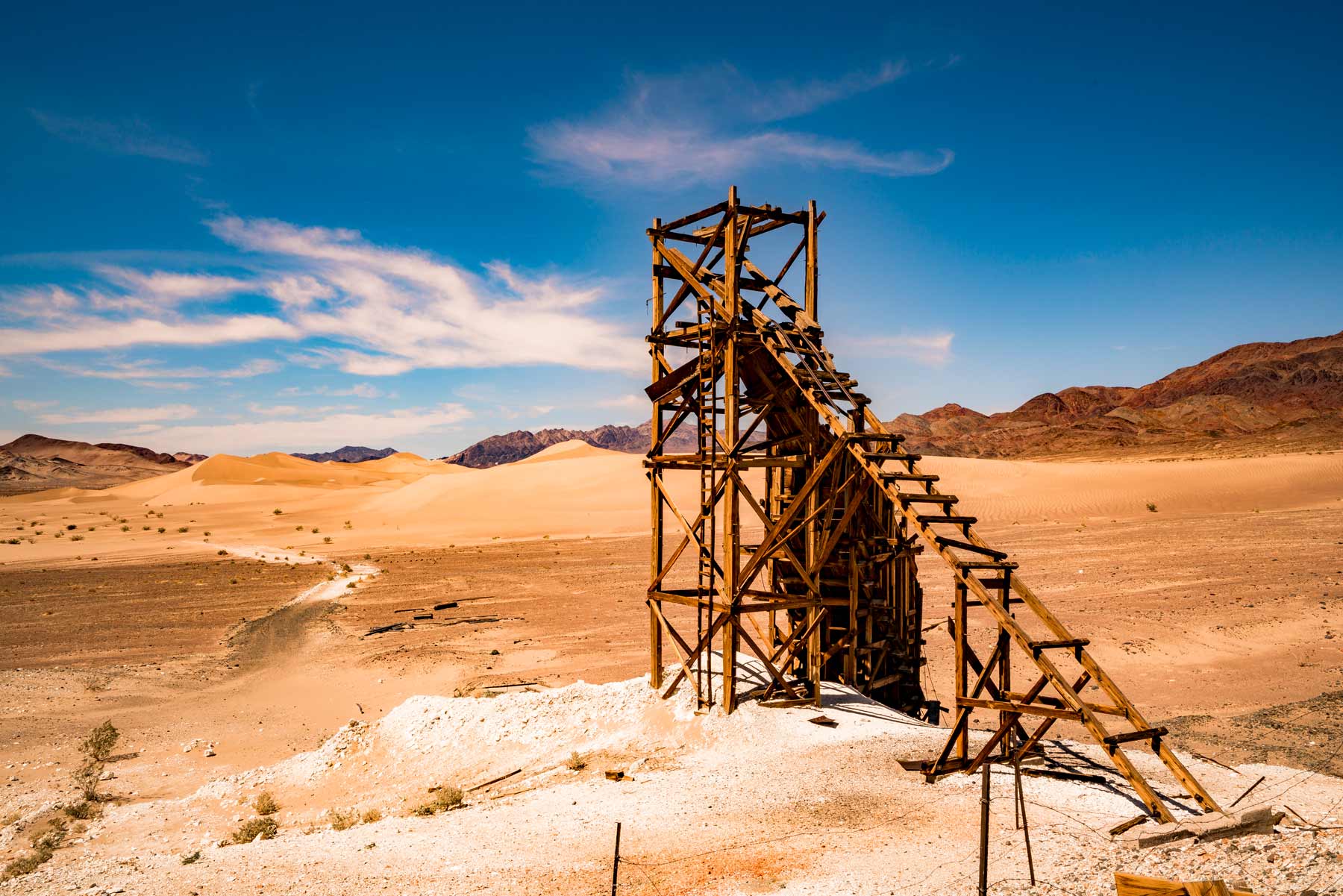
Things To See & Do
Some of the things to see and do at Death Valley National Park include:
- Scenic drives: Visitors can take a scenic drive along some of the park’s main roads, including the Badwater Road, which takes you to the lowest point in North America at 282 feet below sea level, and the Artists Drive, which offers great views of the colorful rock formations.
- Hiking: The park offers over 150 miles of hiking trails, including the famous Golden Canyon Trail and the Mosaic Canyon Trail.
- Camping: Visitors can camp in the park’s nine campgrounds with advance reservations required for most of them during peak season.
- Wildlife viewing: Visitors can see a wide variety of wildlife in the park, including desert bighorn sheep, coyotes, and golden eagles.
- Star gazing: Death Valley is one of the best places in the world for stargazing.
- Ranger-led programs: Visitors can participate in ranger-led programs including guided hikes, campfire talks, and wildlife watching.
- Visitor centers: Death Valley National Park offers several visitor centers with information and educational exhibits about the park’s history, geology, and ecology.
- Photography: Death Valley National Park is a popular destination for photographers, with its unique desert landscapes and natural features, such as the sand dunes, salt flats, and the colorful rock formations.
- Geologic features: The park features unique geological features such as the famous Ubehebe Crater, the Racetrack Playa, and the Devil’s Golf Course.
- Accessibility: The park offers an accessible trail and restrooms for visitors with disabilities.

Check Out Our Death Valley Film
In the remote far reaches of the Mojave Desert lies the largest national park in the continental United States. Hidden here in the hottest place on earth is another world full of diverse life and colorful landscapes. Join us as we take life to the extreme and explore Death Valley.
Filmed primarily in 8K. To make this film we spent weeks in California’s (& Nevada’s) Death Valley National Park, mostly in February and March when the temperatures are more manageable. We traversed hundreds of miles hiking most of the parks trails to capture the park like never before.
As the largest park in the contiguous United States, Death Valley is massive – over 3 million acres!
We visited destinations like: Eureka Dunes, The Racetrack Playa, Mesquite Dunes, Zabriskie Point, Charcoal Kilns, Aguereberry Point, Badwater Basin, Darwin Falls, and more.
1. Golden Gate Bridge
As the #1 California Landmark, More Than Just Parks has selected one of the world’s most beautiful bridges. Is there a more iconic landmark associated with the Golden State than the Golden Gate Bridge?
We don’t think so!
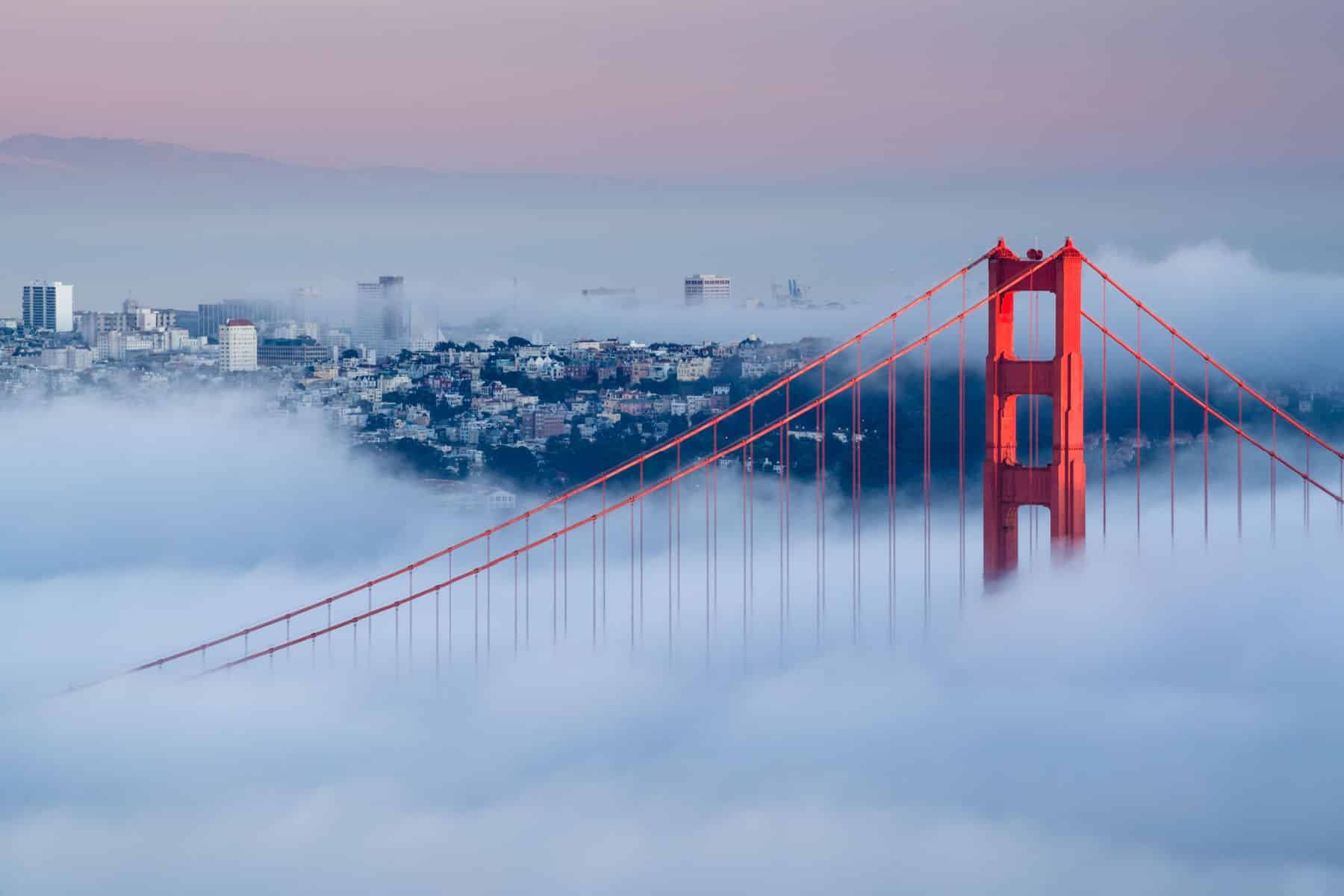
A Short History Of The Golden Gate Bridge
The idea for a bridge across the Golden Gate Strait, which connects San Francisco Bay to the Pacific Ocean, was first proposed in the 19th century. However, it wasn’t until the 1920s that serious plans for the bridge began to take shape.
In 1933, construction began on the Golden Gate Bridge, which was designed by engineer Joseph Strauss and architect Irving Morrow. The project was a massive undertaking that employed thousands of workers and involved a number of engineering and construction challenges, including the strong winds and currents in the Golden Gate Strait.
The bridge was built using a suspension design, with two massive towers and a main span of over 1.7 miles. The bridge’s distinctive orange color was chosen both for its visibility in the foggy San Francisco Bay and as a nod to the surrounding natural environment.

The Bridge Was An Instant Sensation
The Golden Gate Bridge was completed in 1937, and opened to the public on May 27 of that year. The bridge was an instant sensation, drawing huge crowds and receiving widespread acclaim for its beauty and engineering marvel.
Over the years, the Golden Gate Bridge has played an important role in San Francisco’s history and culture. It has been featured in numerous films, TV shows, and works of literature, and has become a symbol of San Francisco and the American West.
Today, the bridge is a major tourist attraction, with millions of visitors each year, and remains one of the most beloved and recognizable landmarks in the world.
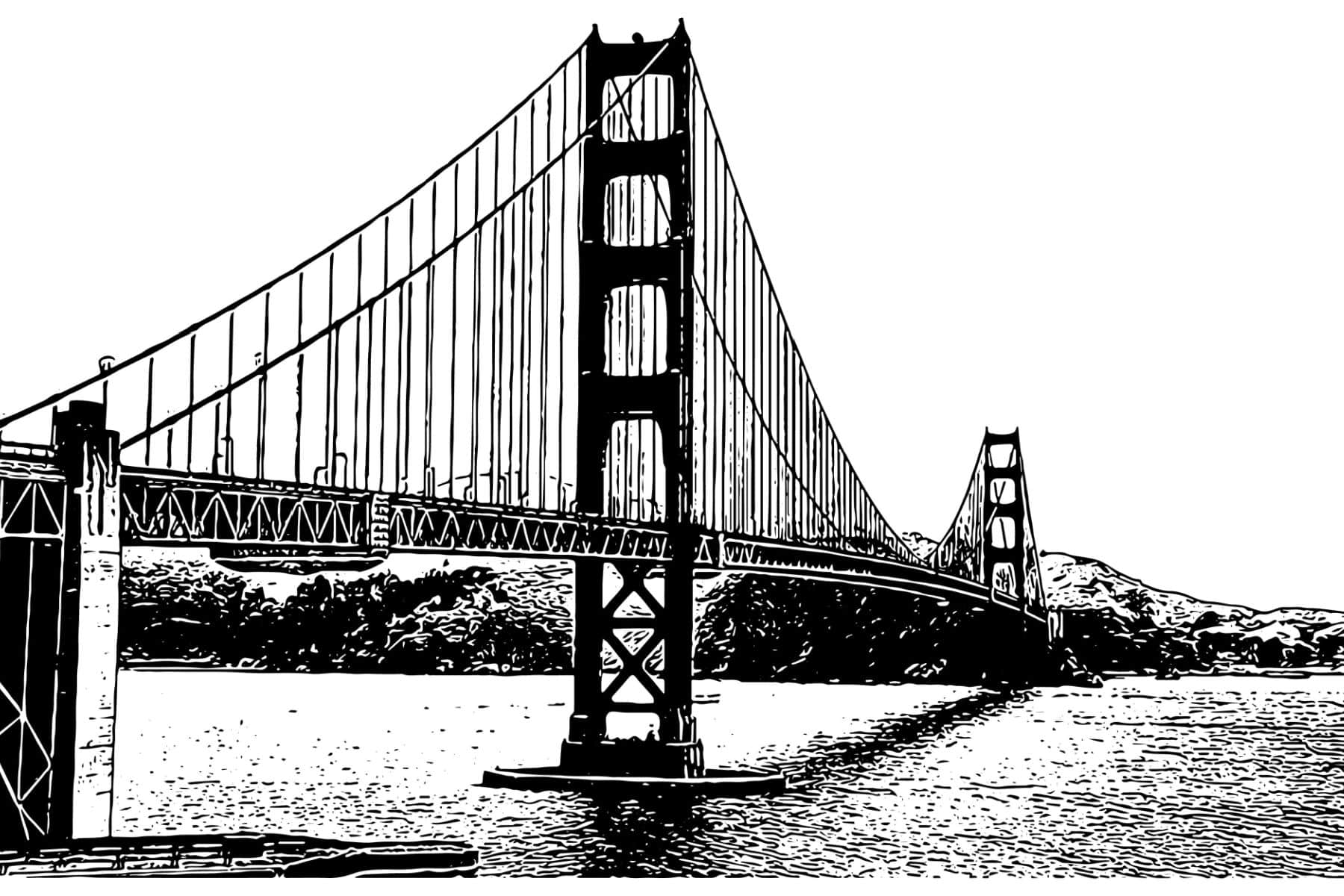
Map Of California Landmarks
List Of California Landmarks
- Golden Gate Bridge
- Death Valley National Park
- Disneyland
- Joshua Tree National Park
- Yosemite National Park
- TCL Chinese Theater
- Redwood National Park
- John Muir National Historic Site
- Hollywood Sign
- Alcatraz
- The Getty Museum
- Lake Tahoe
- Fisherman’s Wharf
- Rodeo Drive, Beverly Hills
- Coronado Island
- Mission Basilica San Diego de Alcala
- Belmont Park
- Sequoia National Park
- Griffith Park & Observatory
- Hearst Castle
- Santa Monica Pier
- Palace of Fine Arts in San Francisco
- Napa Valley
- Santa Cruz Beach Boardwalk
- Hollywood Walk of Fame
Why Trust Us About California Landmarks?
We’re Jim Pattiz and Will Pattiz, collectively known as the Pattiz Brothers (and sometimes as the “Parks Brothers”).
You should probably know that we don’t just make this stuff up out of thin air. We absolutely LOVE America’s public lands and have spent our entire adult lives bringing these places to life through our amazing short films.
We’ve worked with the National Park Service, the Department of Interior, USDA, U.S. Forest Service, and more for years creating films on important places and issues. Our work has been featured in leading publications all over the world and even some people outside of our immediate family call us experts on the national parks.
And, in 2018, our father – having spent a lifetime teaching history – joined us so that he could help us to tell the incredible stories behind these amazing places.
Meet The Parks Brothers
We Hope You’ll Join Our Journey

Our goal here at More Than Just Parks is to share the beauty of America’s national parks and public lands through stunning short films in an effort to get Americans and the world to see the true value in land conservation.
We hope you’ll follow our journey through the parks and help us to keep them the incredible places that they are. If you’re interested in joining the adventure then sign up below!
Helpful Related Articles
Redwood National Park: Redwood National Park Ultimate Guide
Things to Do Redwood National Park: 15 EPIC Things to Do in Redwood National Park
Death Valley National Park Guide: Death Valley National Park Ultimate Guide
Things to Do Death Valley: 18 EPIC Things to Do in Death Valley National Park
Joshua Tree Guide: Joshua Tree National Park Ultimate Guide
Best Hikes Joshua Tree: 15 Epic Hikes in Joshua Tree National Park
Things to Do Pinnacles National Park: 10 Epic Things to Do in Pinnacles National Park
Redwoods Near San Francisco: 15 BEST Places to See Redwoods Near San Francisco
Los Angeles National Parks: 7 Epic National Parks Near Los Angeles
San Francisco National Parks: 8 BEST National Parks Near San Francisco
San Diego National Parks: 6 AMAZING National Parks Near San Diego
Yosemite Facts: 16 Shocking Yosemite National Park Facts
Sequoia Facts: 15 GIANT Sequoia Tree & National Park Facts
Channel Islands Facts: 13 Amazing Channel Islands National Park Facts
West Coast Parks: 20 BEST West Coast National Parks Ranked by Experts

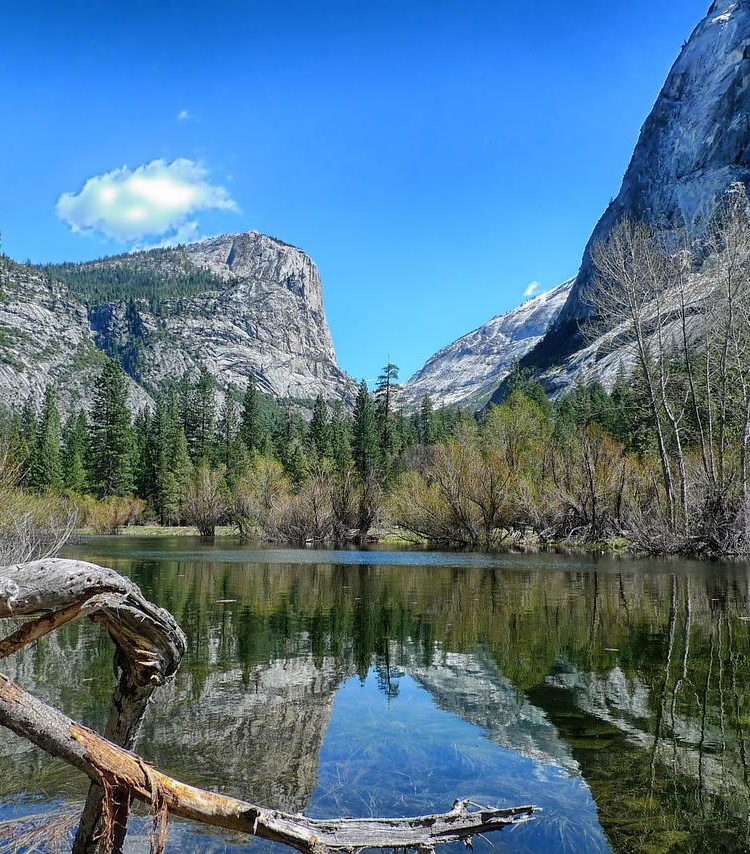

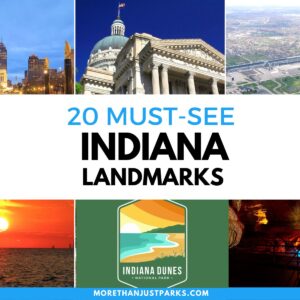

Leave a Reply